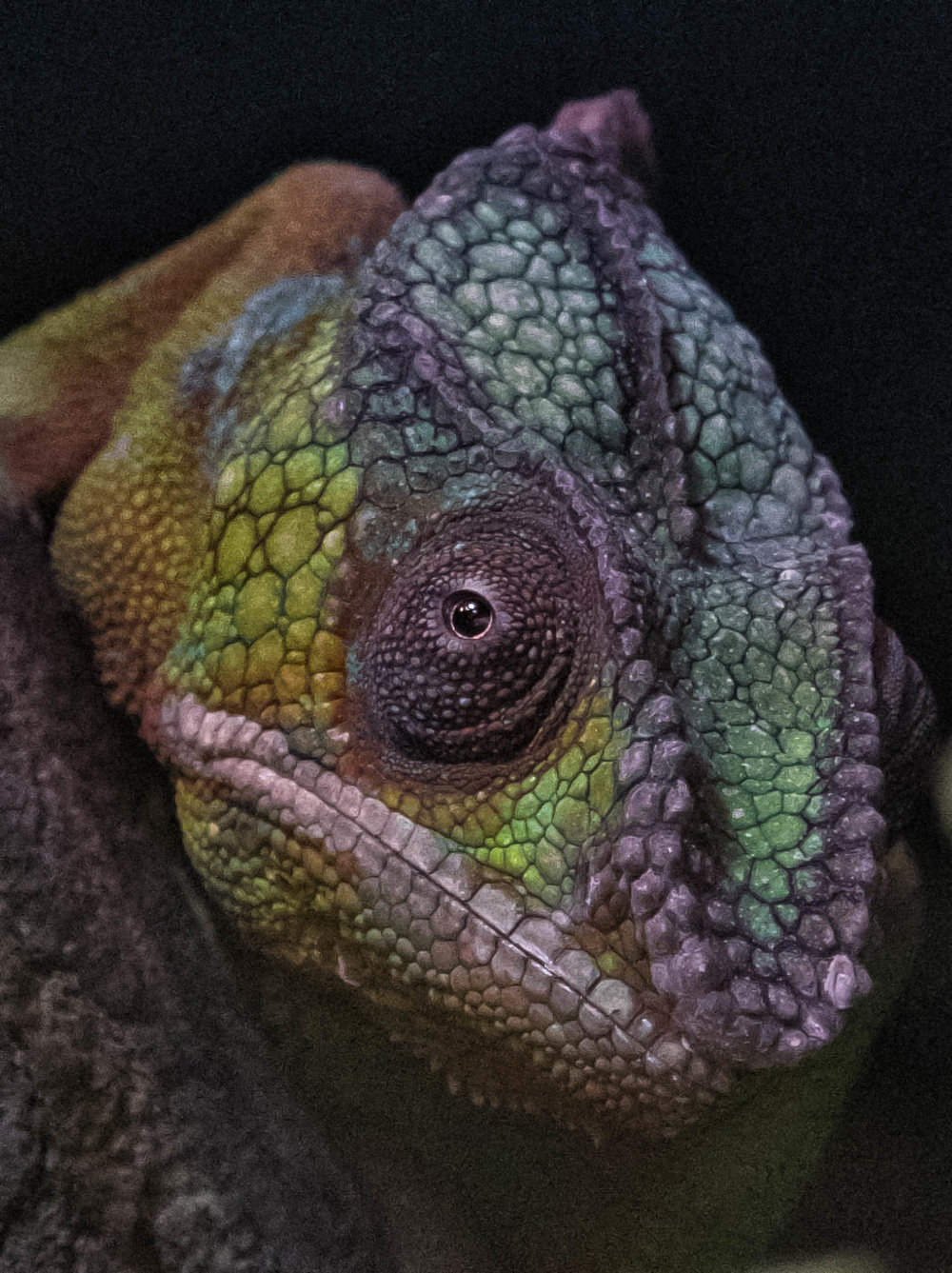
I’m in two minds about zoos. They do good work in conserving species and teaching students and the public at large. There is, however, always a nagging doubt about locking up wild animals against their will. My younger daughter, who is well grown up and who likes animals, says that so far as the animals are concerned humans are in the zoo and that they are watching us watching them. Certainly, the Panther Chameleon, in the picture above, seems to be using one of its two independently operating eyes to watch me taking its photograph.
Anyway, it is January and with the children gone back to school, the Dublin Zoo is very uncrowded at this time of the year. On one bright day last week I took myself there along with some Fujifilm gear ( X-Pro 2 with 50-140mm f2.8 zoom and X-T 1 with 56mm f1.2) to see how the animals had ‘got over the Christmas’ to use a well known Dublin expression.
Around Christmas time a festival called ‘Wild Lights’ took place at night in Dublin Zoo. This featured lit Chinese lanterns, flowers and animal models and montages. On the day I was there, teams were getting reading to take down the display. The items still looked quite attractive in daylight.
Click on gallery images to see the full frame
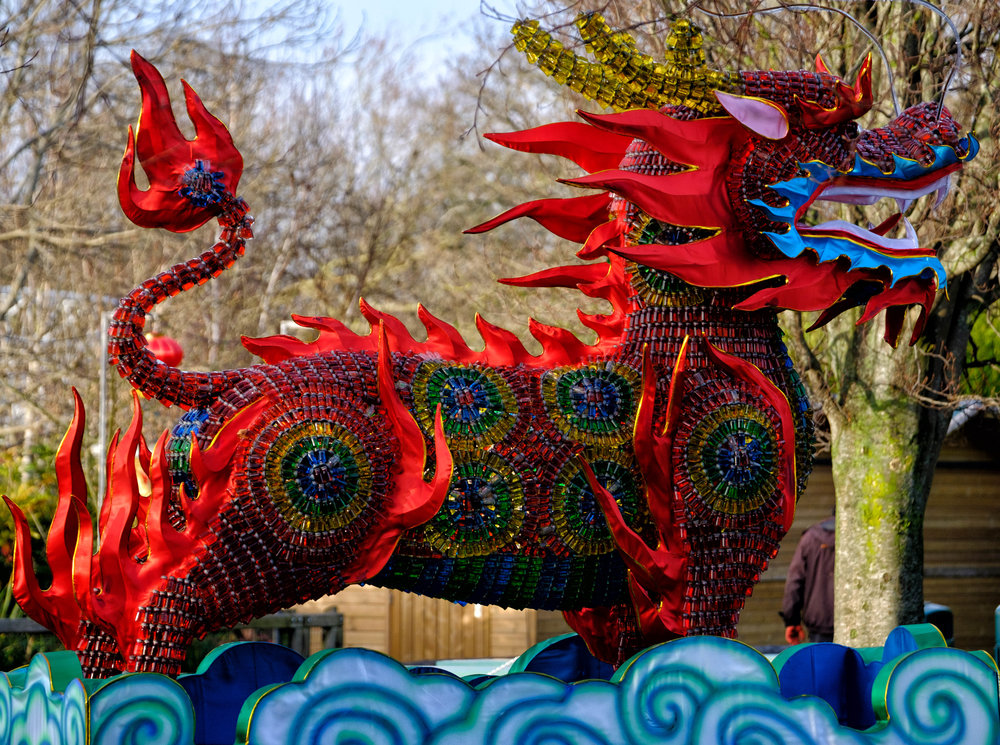
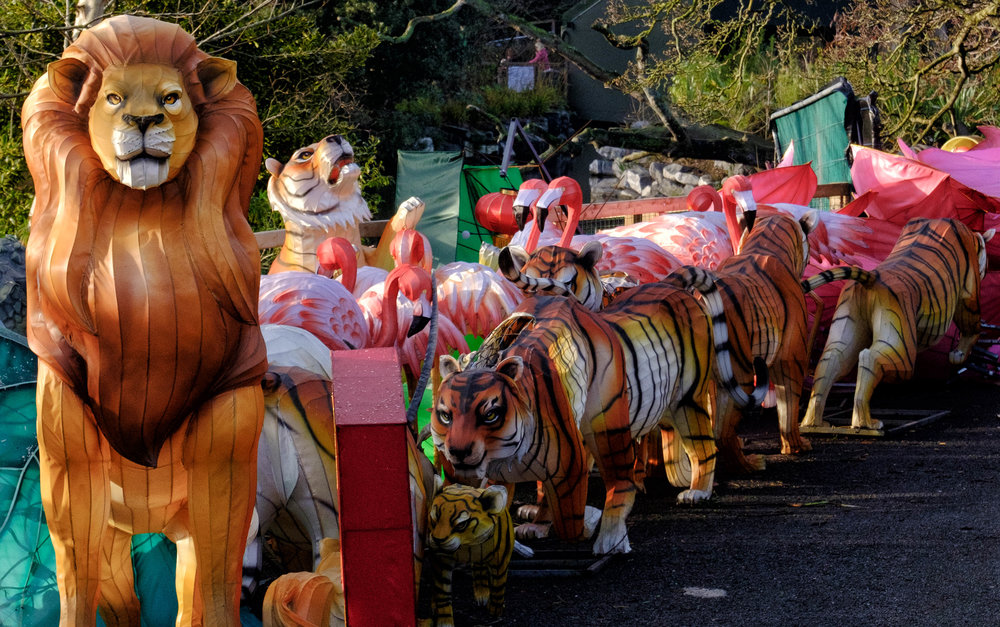
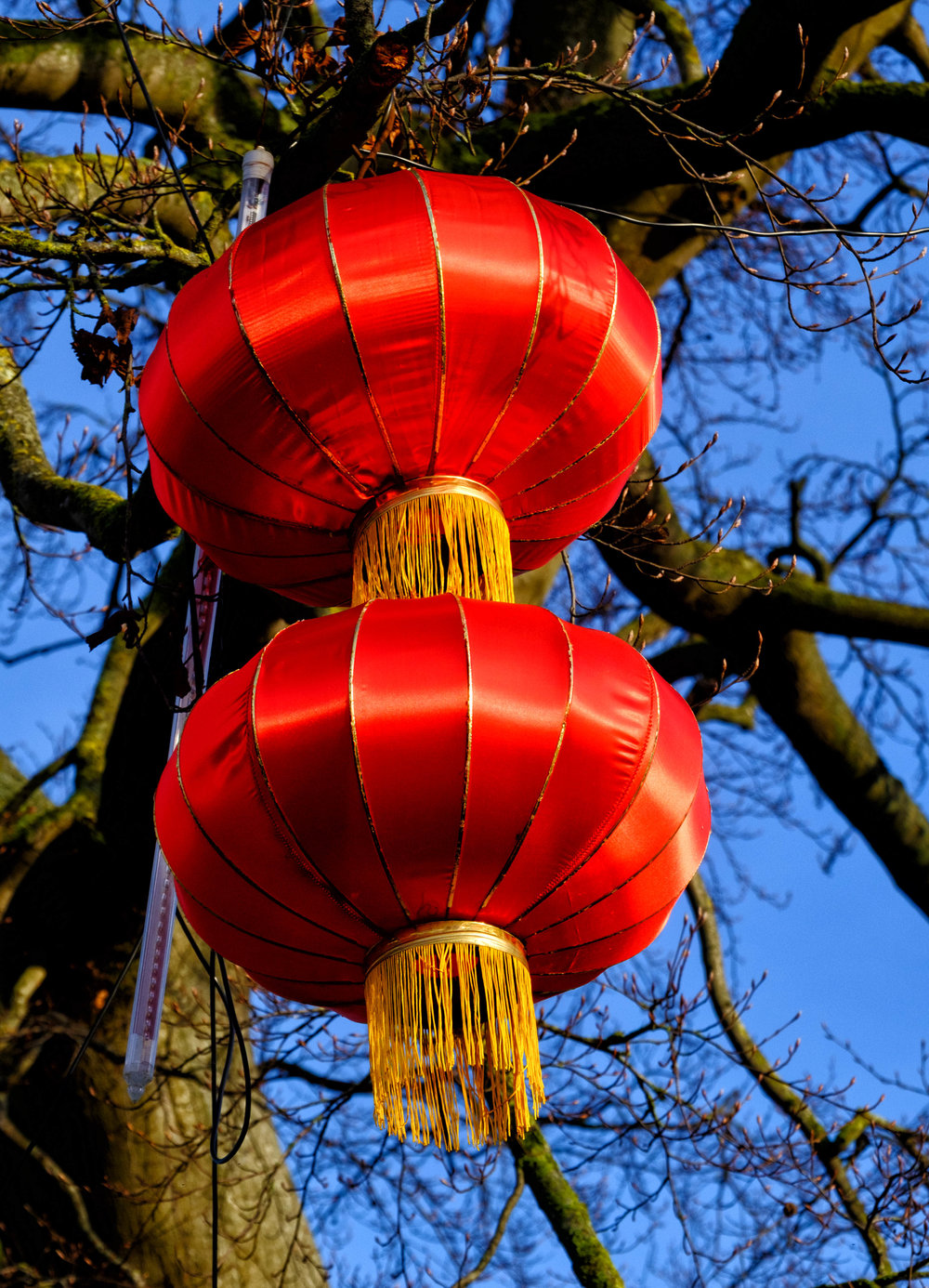
These photos, and some others in this article, were processed with the Fujifilm Velvia treatment available in Lightroom.
When I arrived mid morning, the Ring Tailed Lemurs were having a spot of brunch.
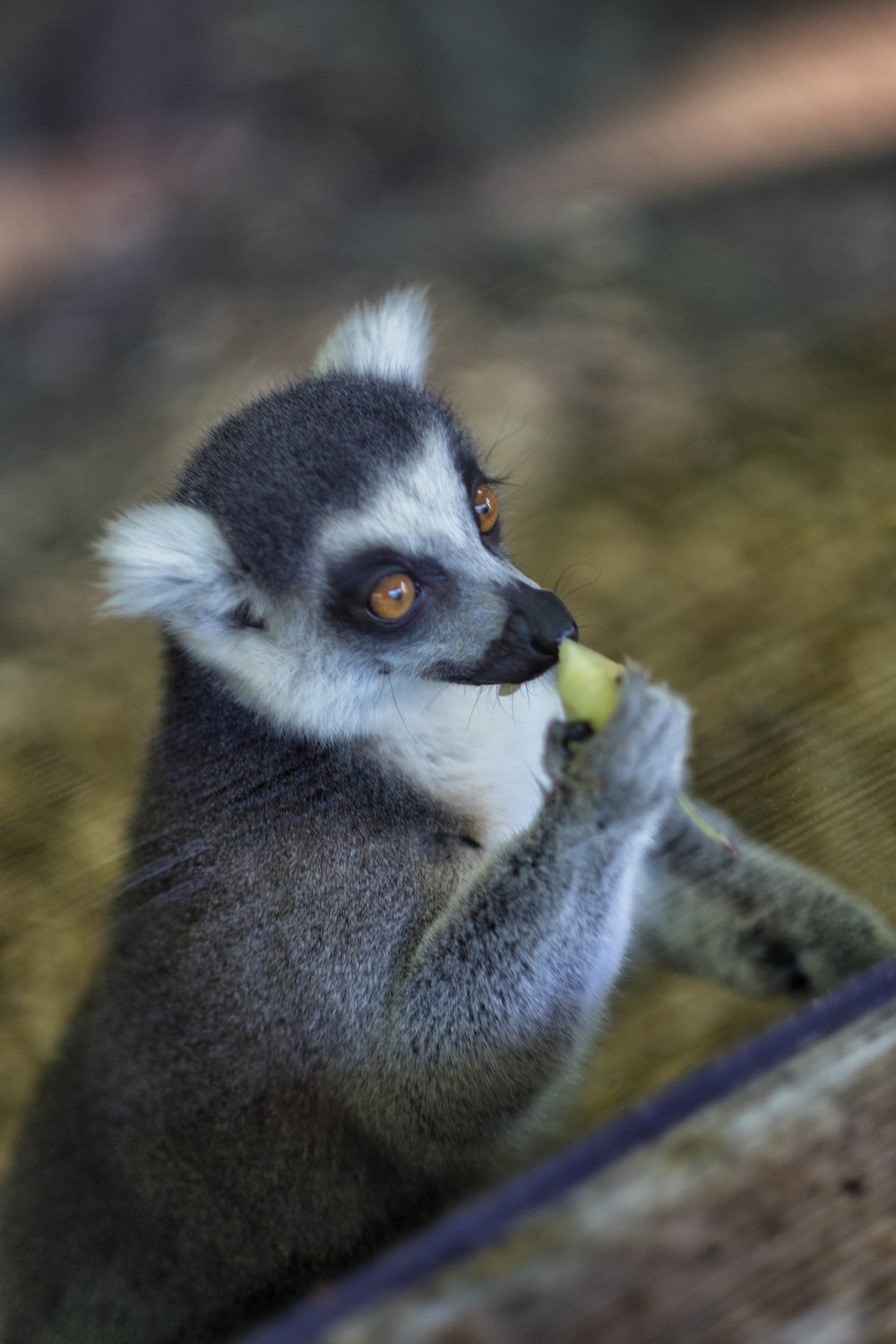
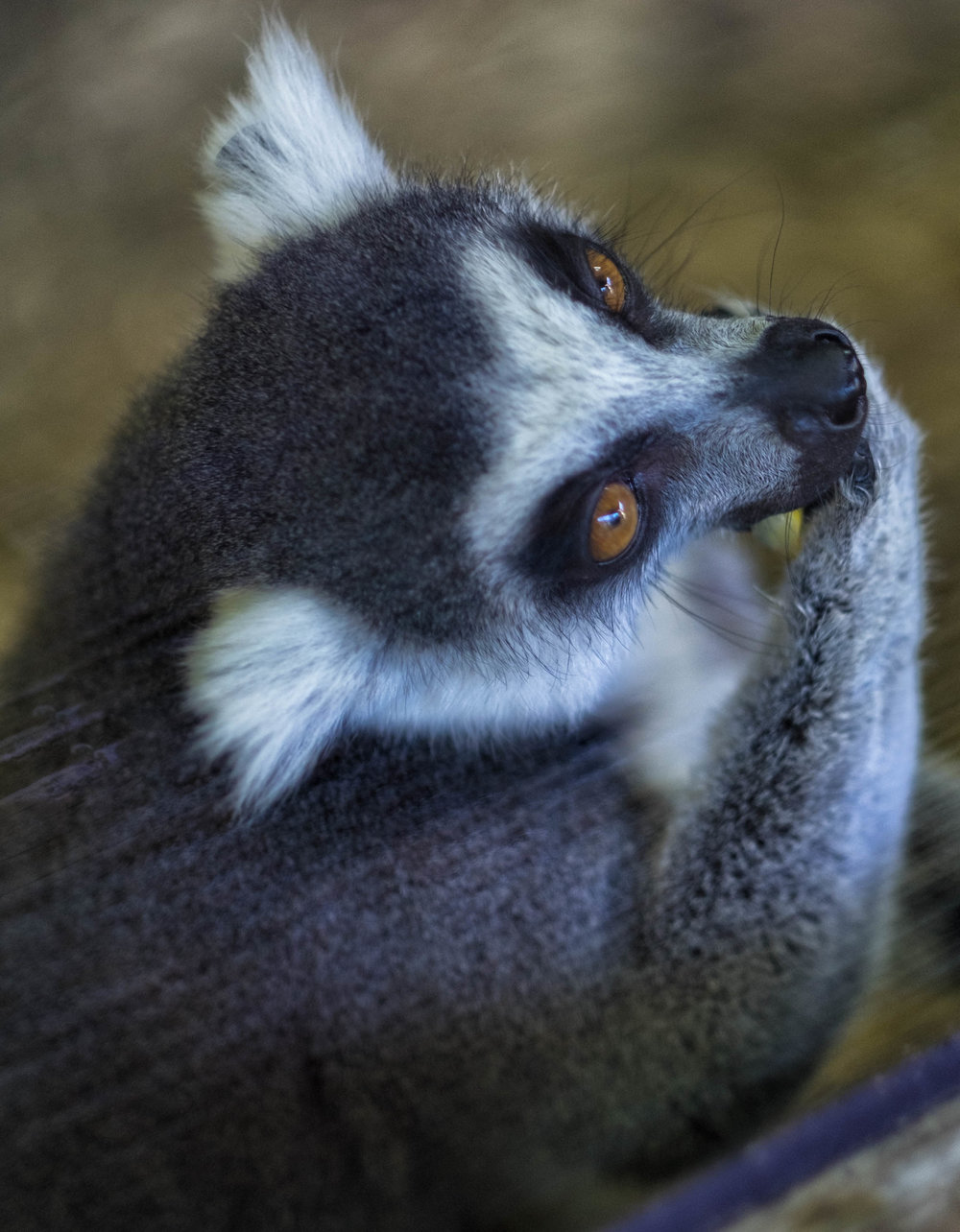
Both of these photos were taken at f1.2 with the 56mm lens. It is optically much better than the zoom, but it is slow to focus. You can’t have everything, I suppose.
Next up, I found that some of my favourites such as the Snow Leopards and the Orangutans were not around due to animal husbandry or accommodation upgrade, but the Flamingos were out looking splendid in the morning sunshine.
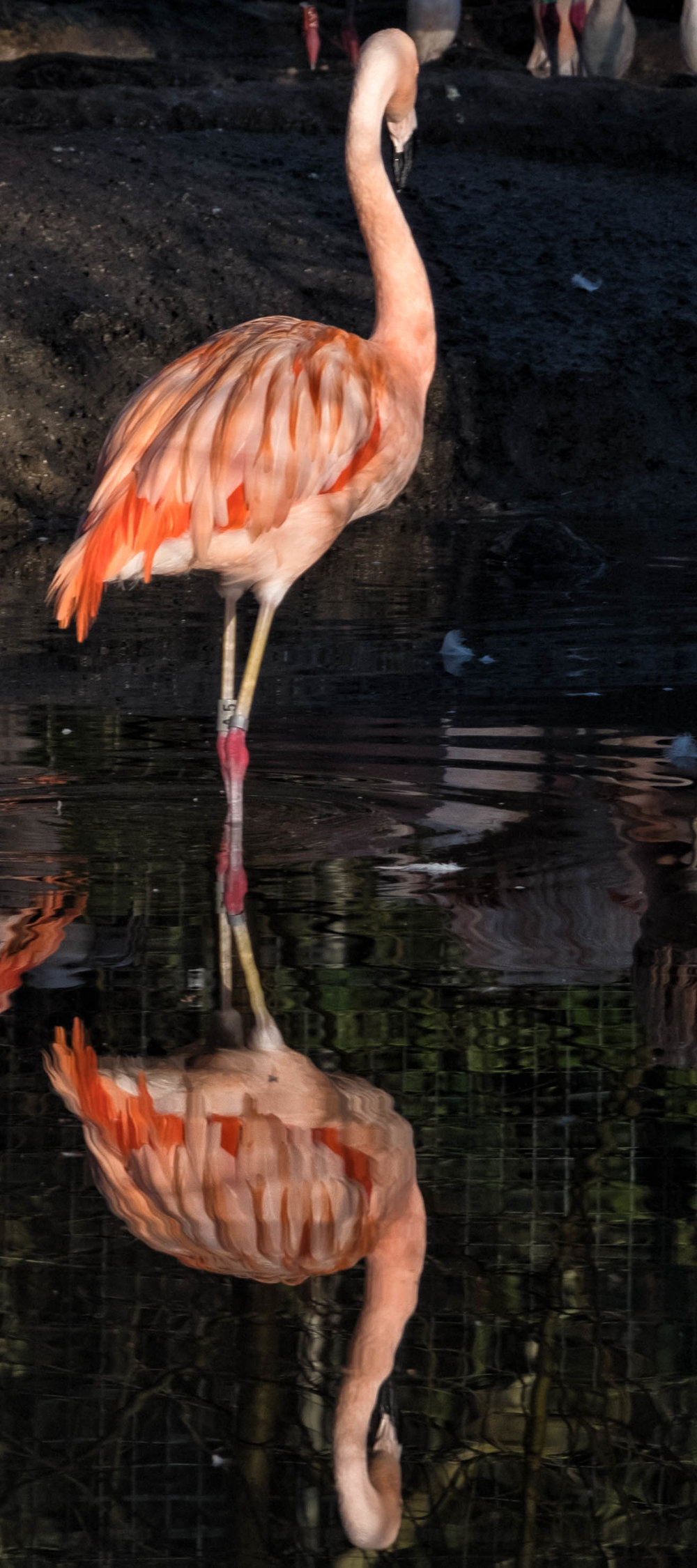
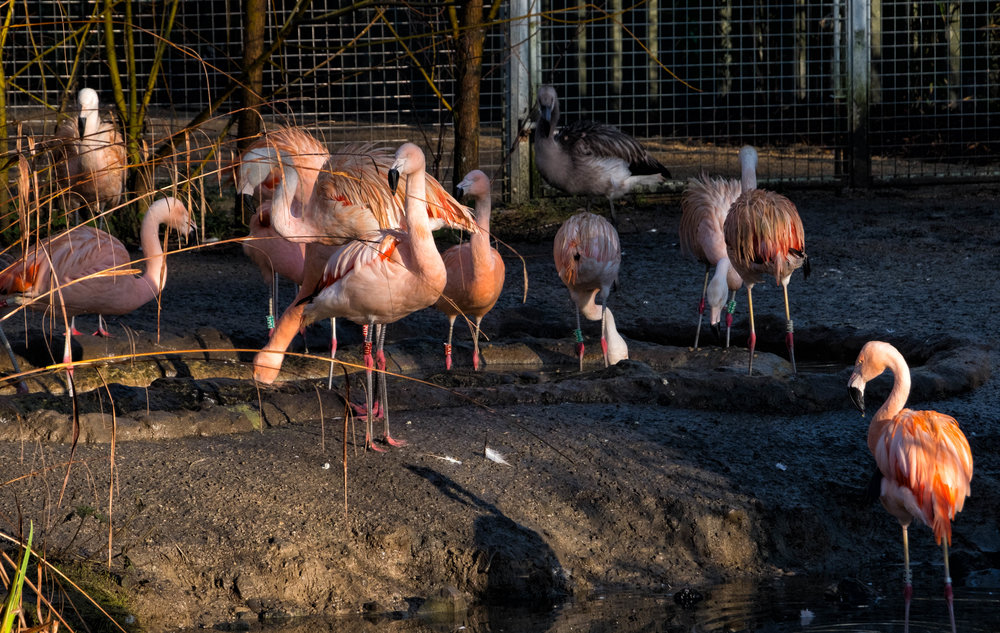
Next to the Flamingos were the playful Sea Lions doing their acrobatics above and below the (somewhat murky) water.
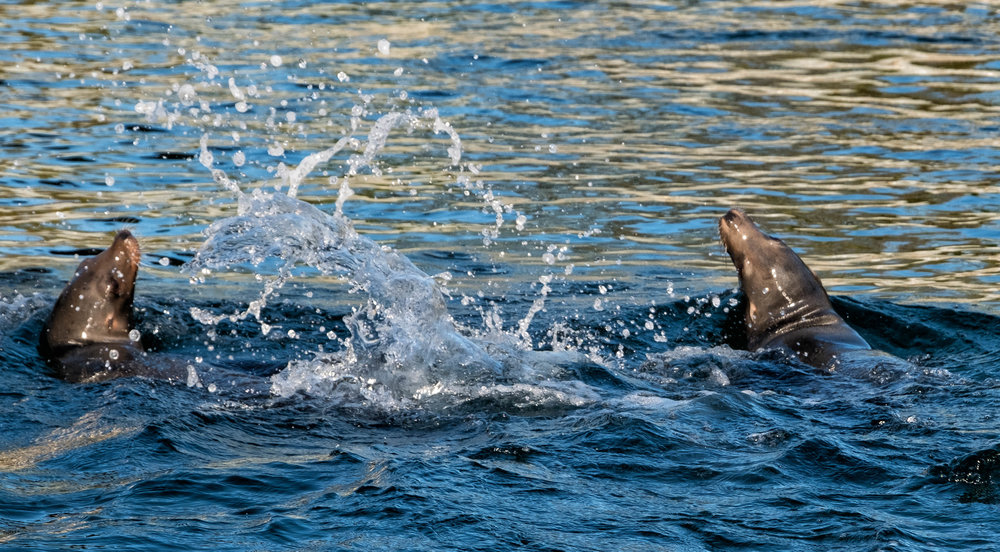
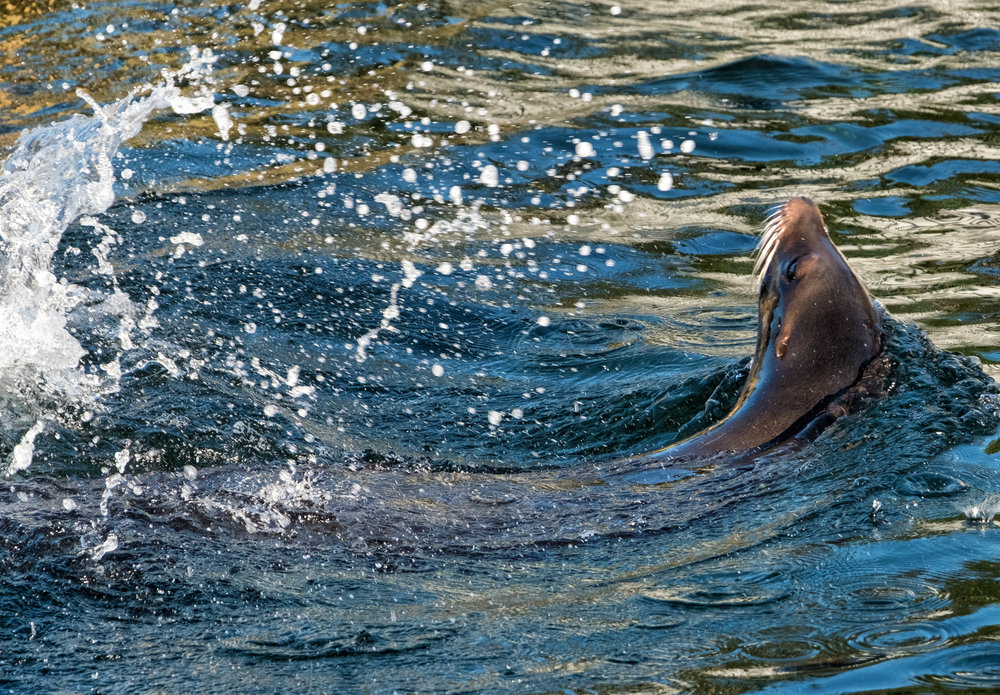
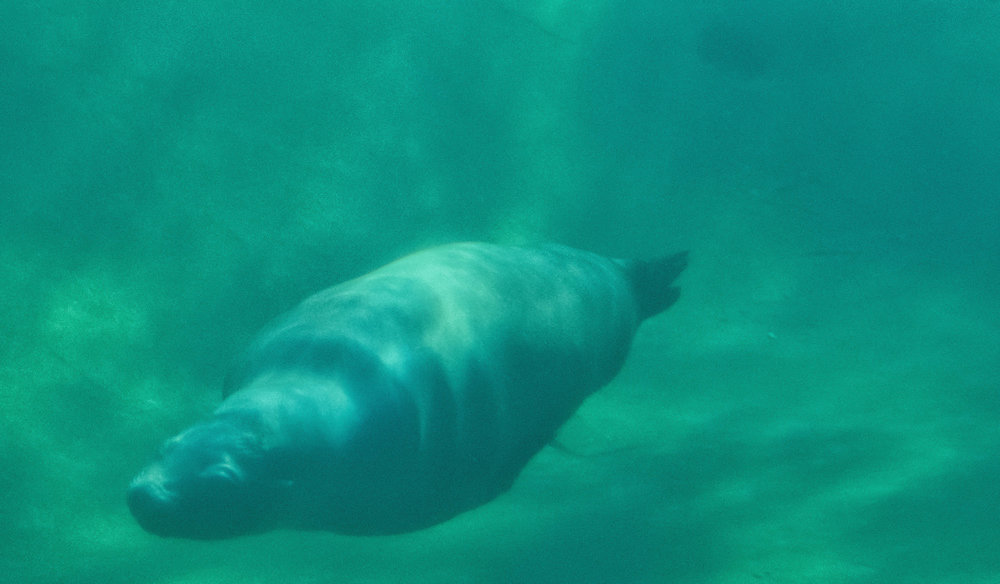
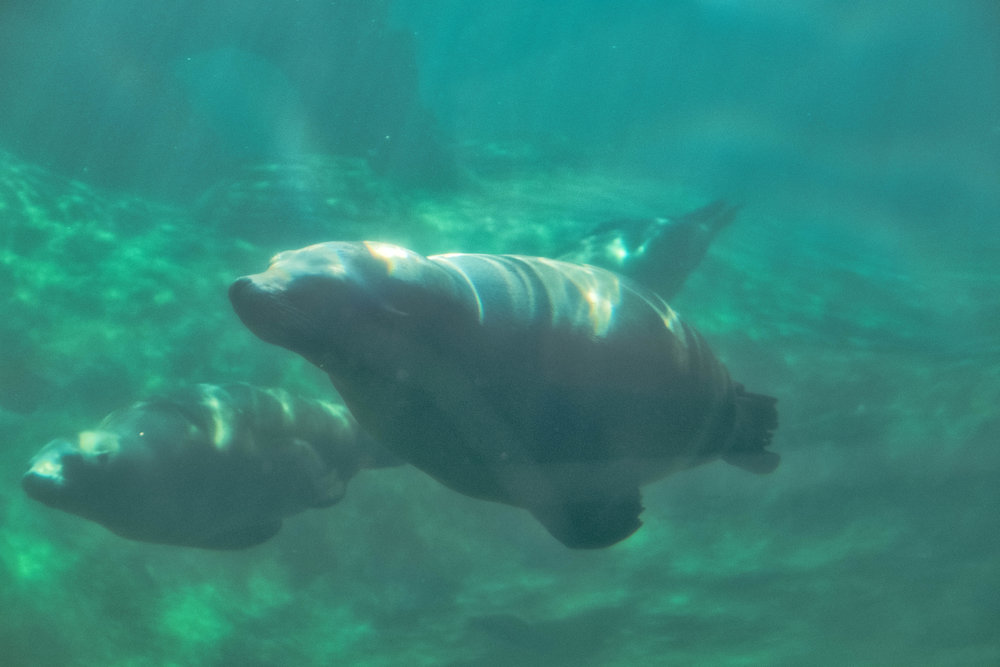
Then it was on to the ‘African Savanna’ area where animals, which are of no threat to one another, are kept in wide open areas just as they would be on the African Plains. Indeed, in these two photos the Giraffes appear to be guarding the Ostriches
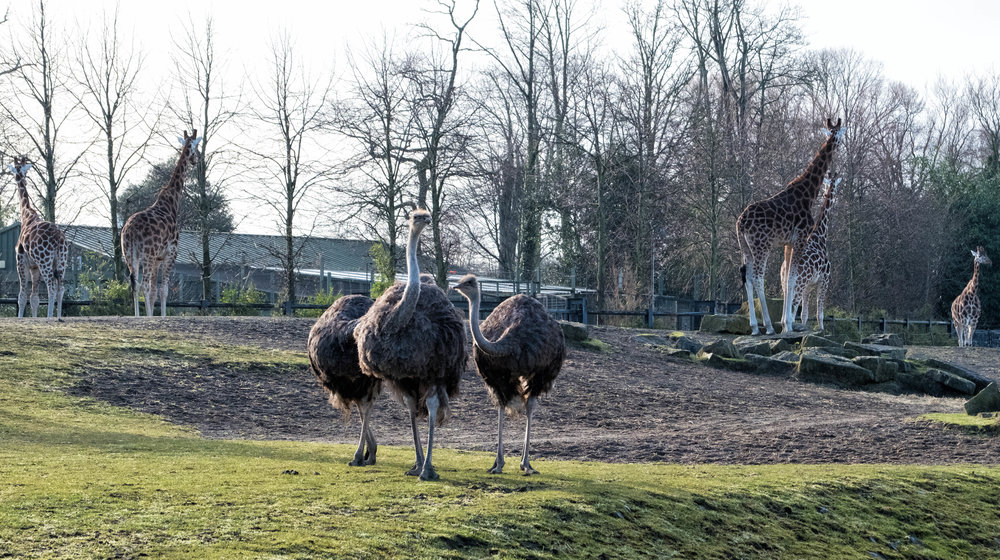
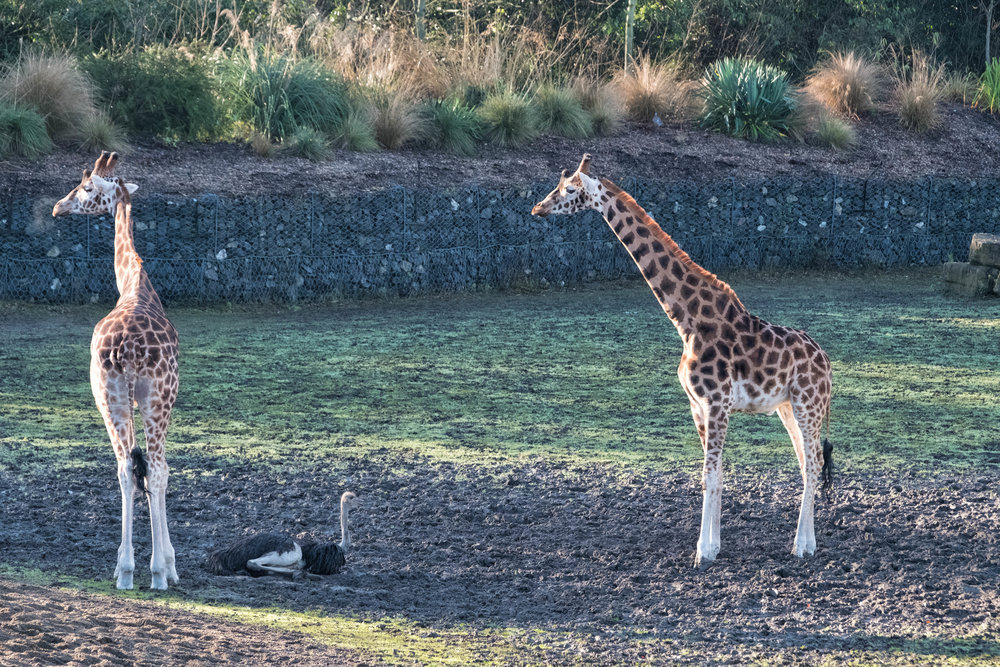
Also in the same area was the Rhinoceros family with the youngest one grown up considerably since last year.
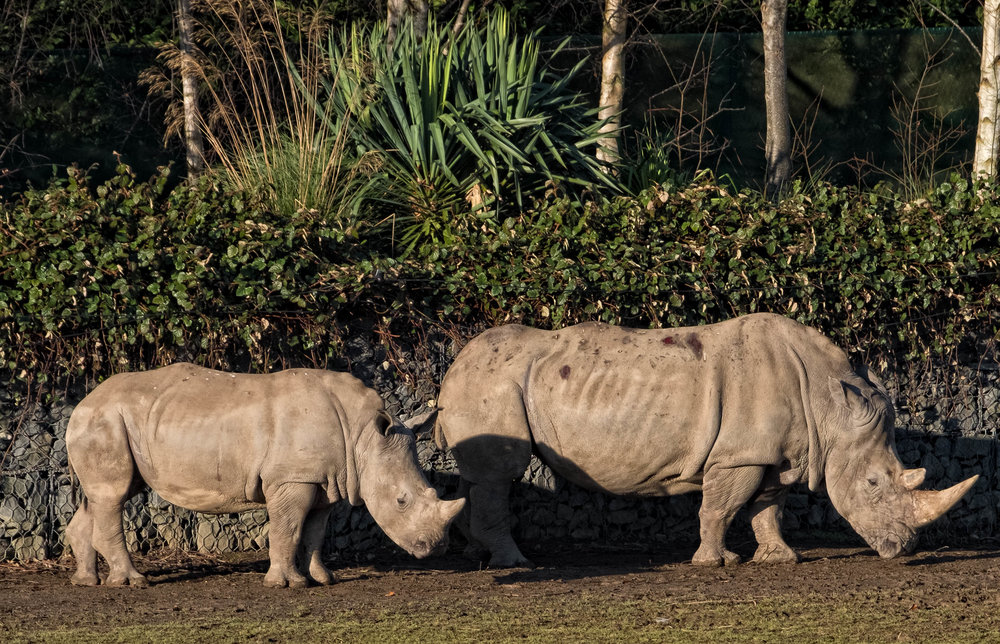
This year it was much warmer than last year and the Gorillas were outdoors. Unfortunately, they were in an island area that was out on a lake and were only visible through a sloping plexiglass window with lots of gunge on it, which affected both focus and colour. They could see me, though, and I am not sure how pleased this chap was to see me. In a human, his gesture might be considered unfriendly.
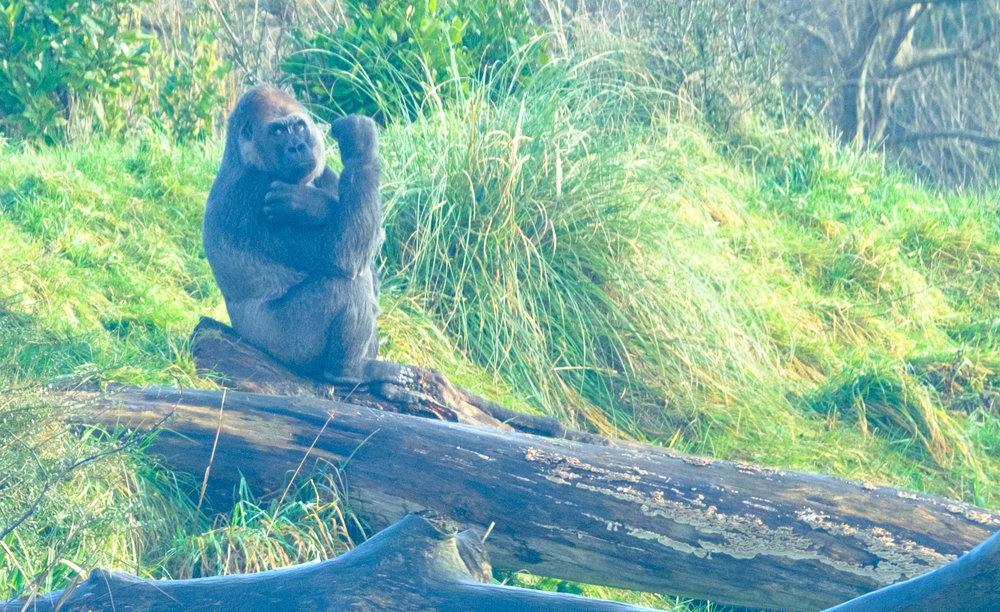
He was then joined by a companion and they sat together for a little chat.
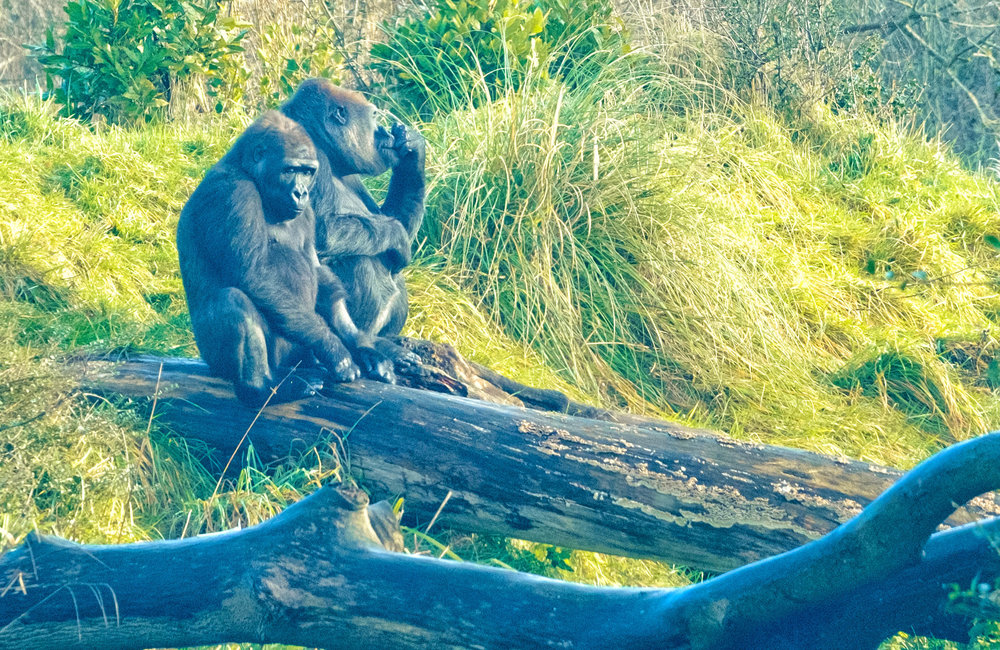
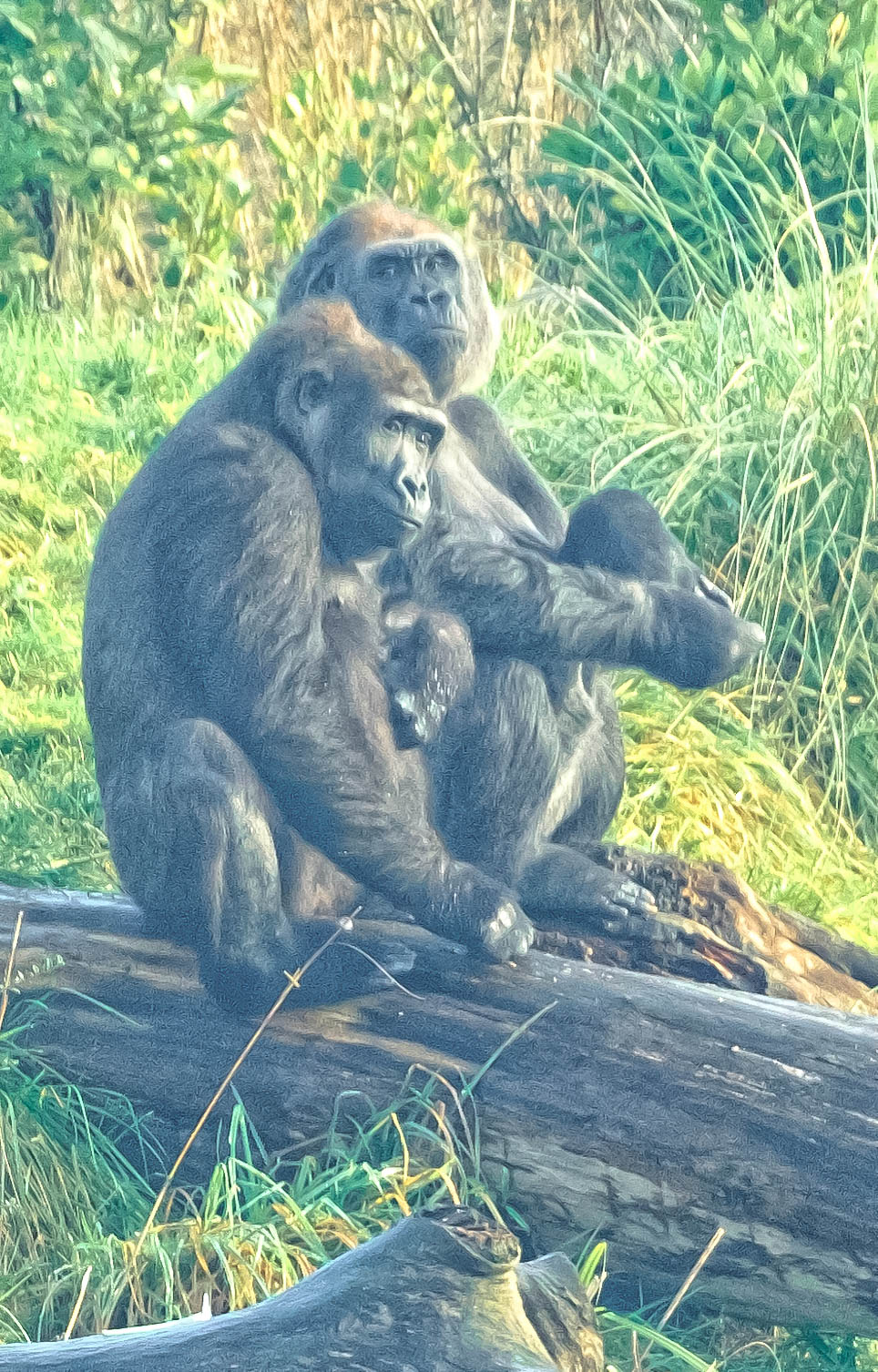
I think that, in the photo on the right above, one of them is saying something like’ Do you see that idiot over there with the X-Pro 2?’
Further along, the Chimpanzees were also on an island and were sitting and discussing affairs of the day when they saw me.
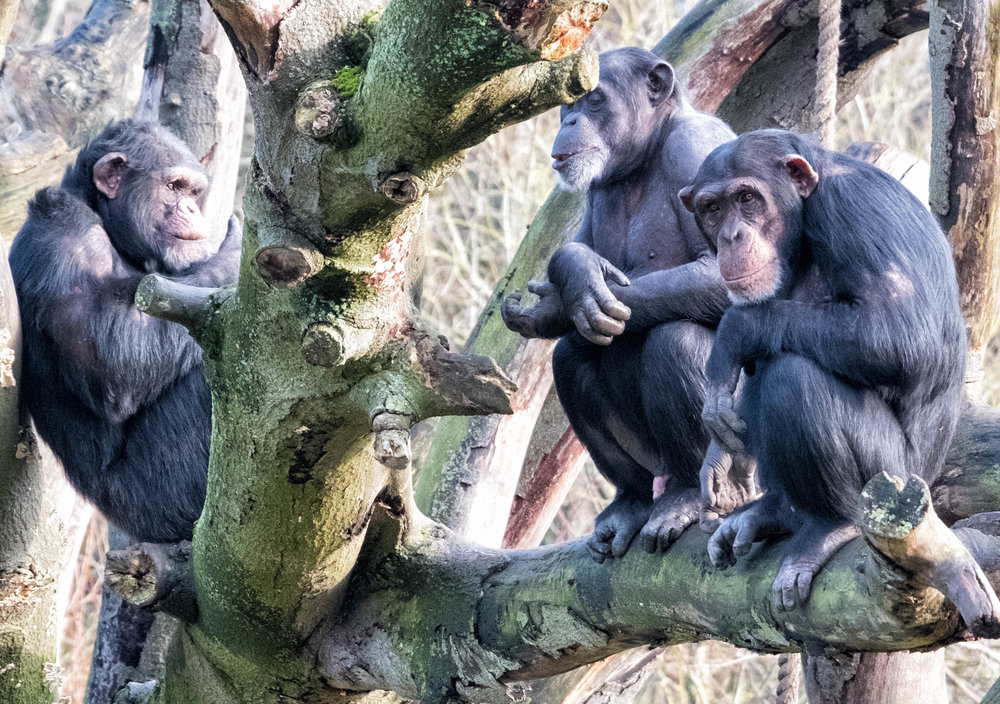
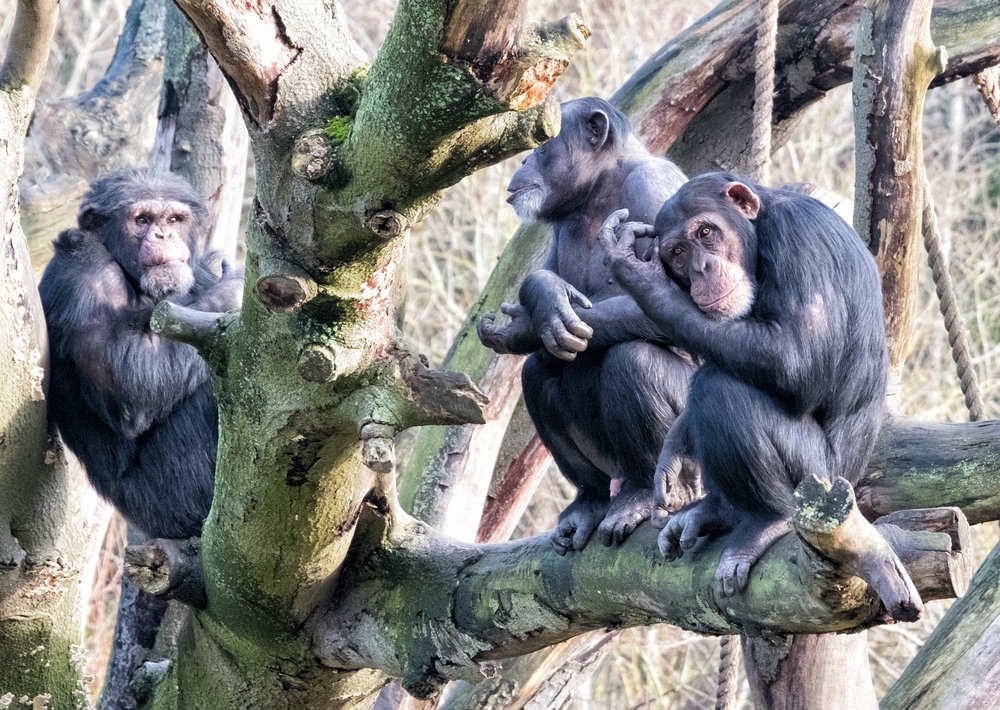
In the photo on the left, the oldest Chimpanzee, on the left of the picture, seems to be saying to the youngest one on the right ‘Would you ever get rid of that idiot with the X-Pro 2?’ and in the photo on the right, the eldest Chimpanzee seems to be saying ‘I thought that I told you to get rid of the fellow with the X-Pro 2’ much to the embarrassment of the youngest one. You’d have imagined that they would have got used to tourists by now.
I then saw a Bongo, which was not a musical instrument, but this rather beautiful large antelope.
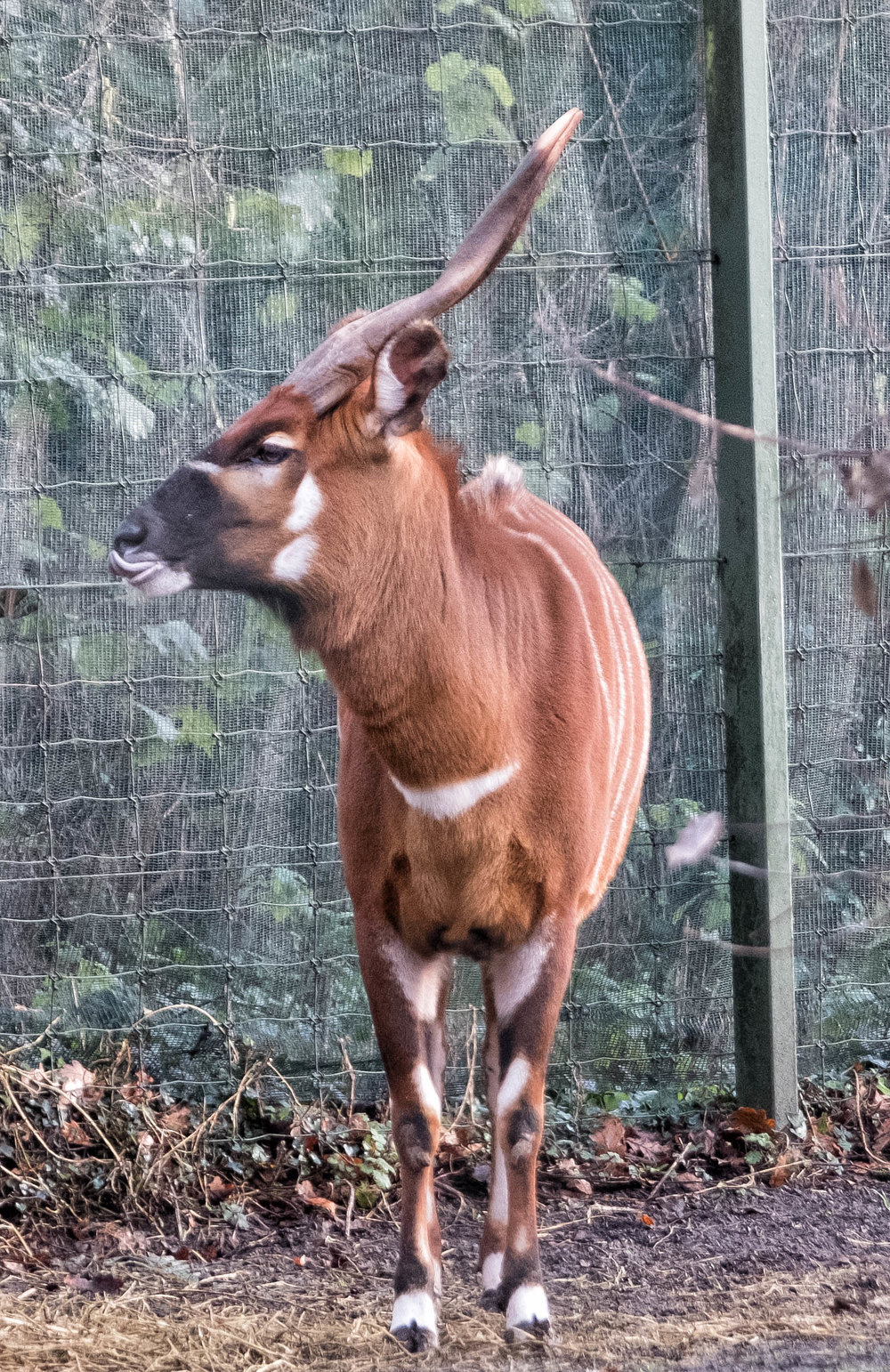
I called by the Penguins who looked resplendent in their ‘dinner jackets’.
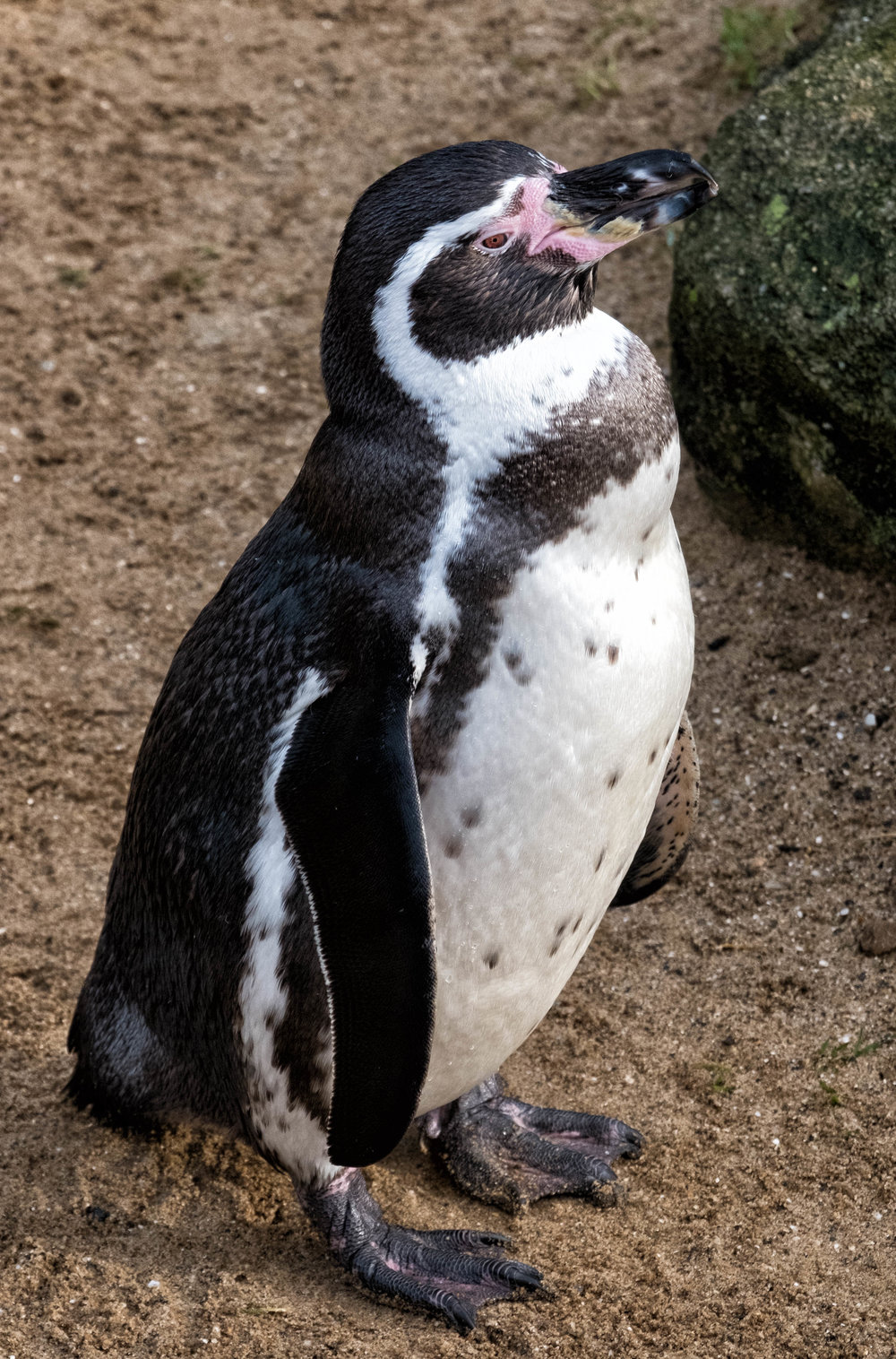
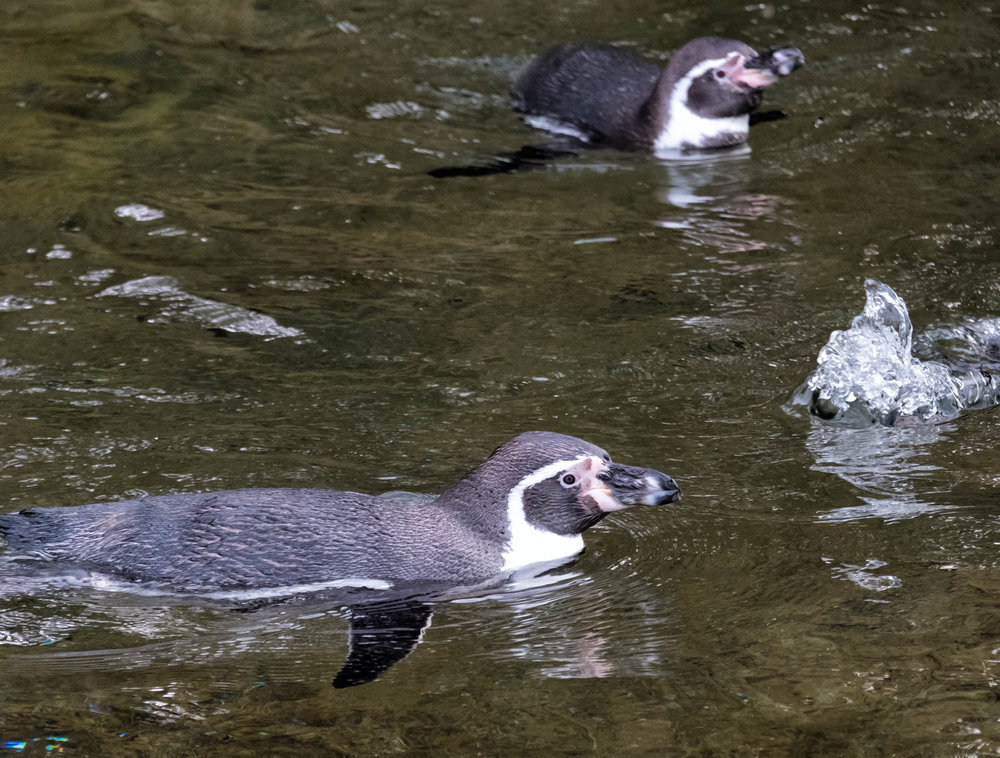
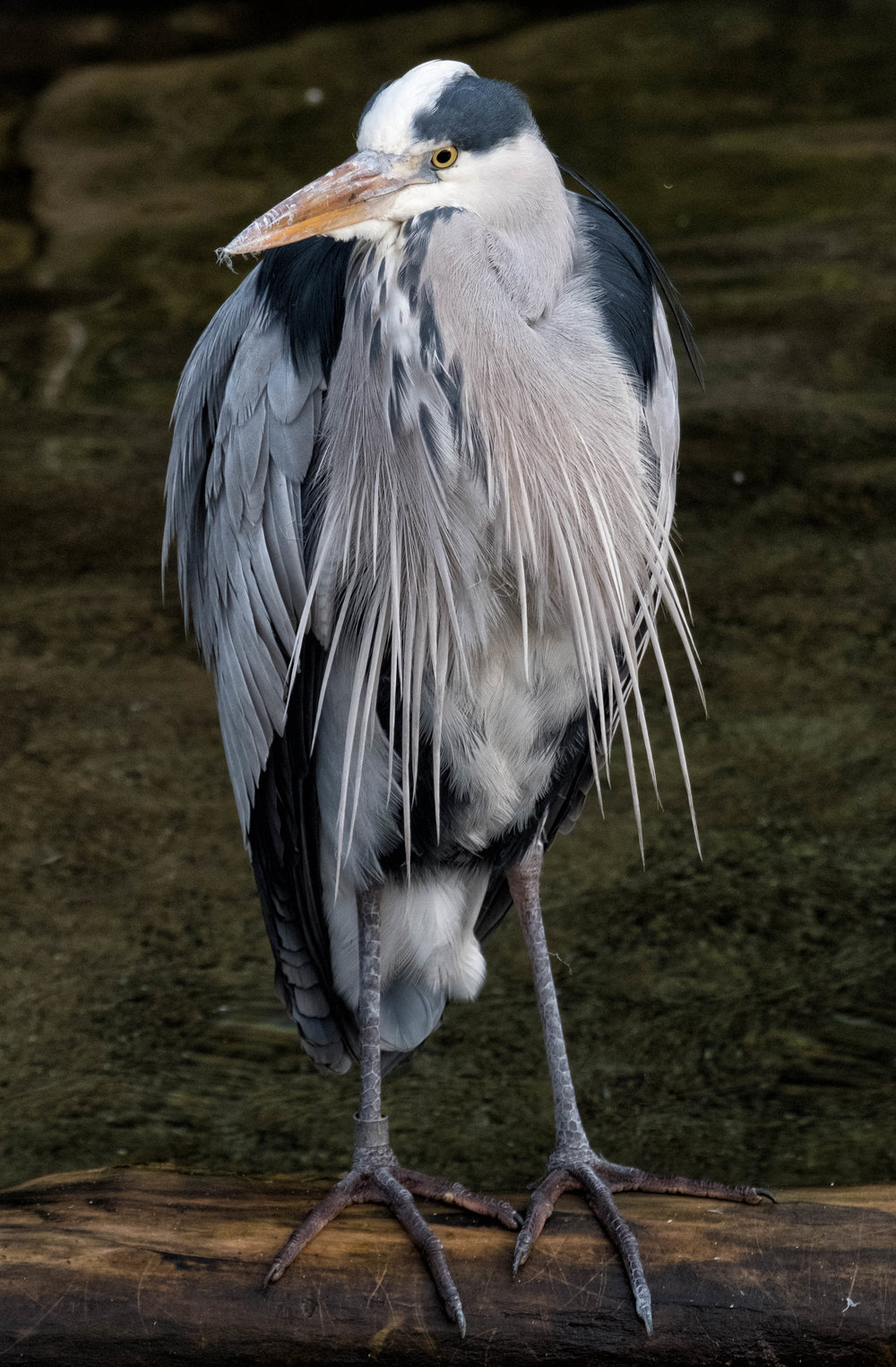
Yes, that is a Heron on the right above, but it seemed to live with the Penguins in order to share in their dinners. Another Heron was on similar stand-by duty at the Sea Lion pool
Speaking of feeding, there was a new arrangement for feeding at the Elephant enclosure which involved cranes.
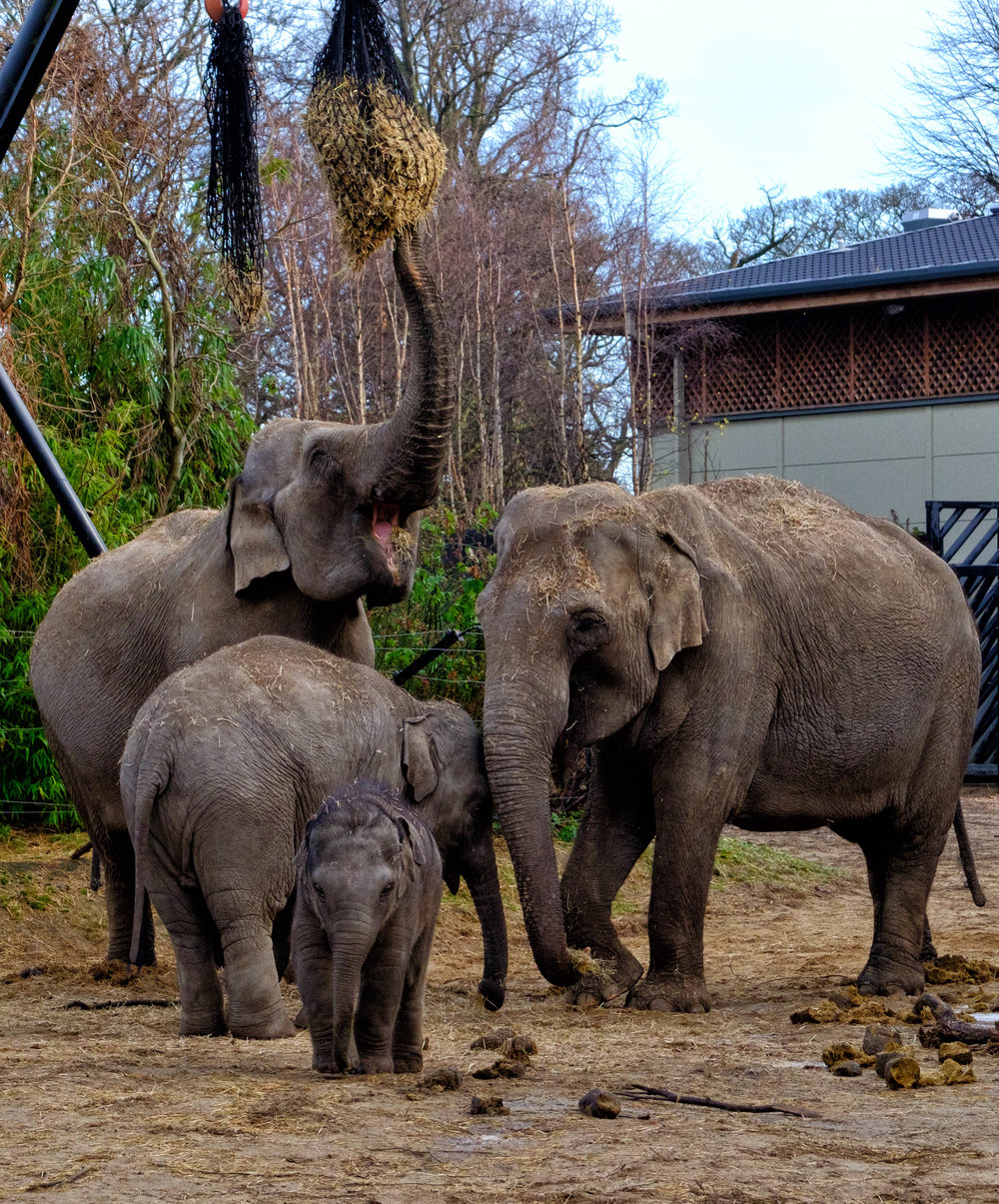
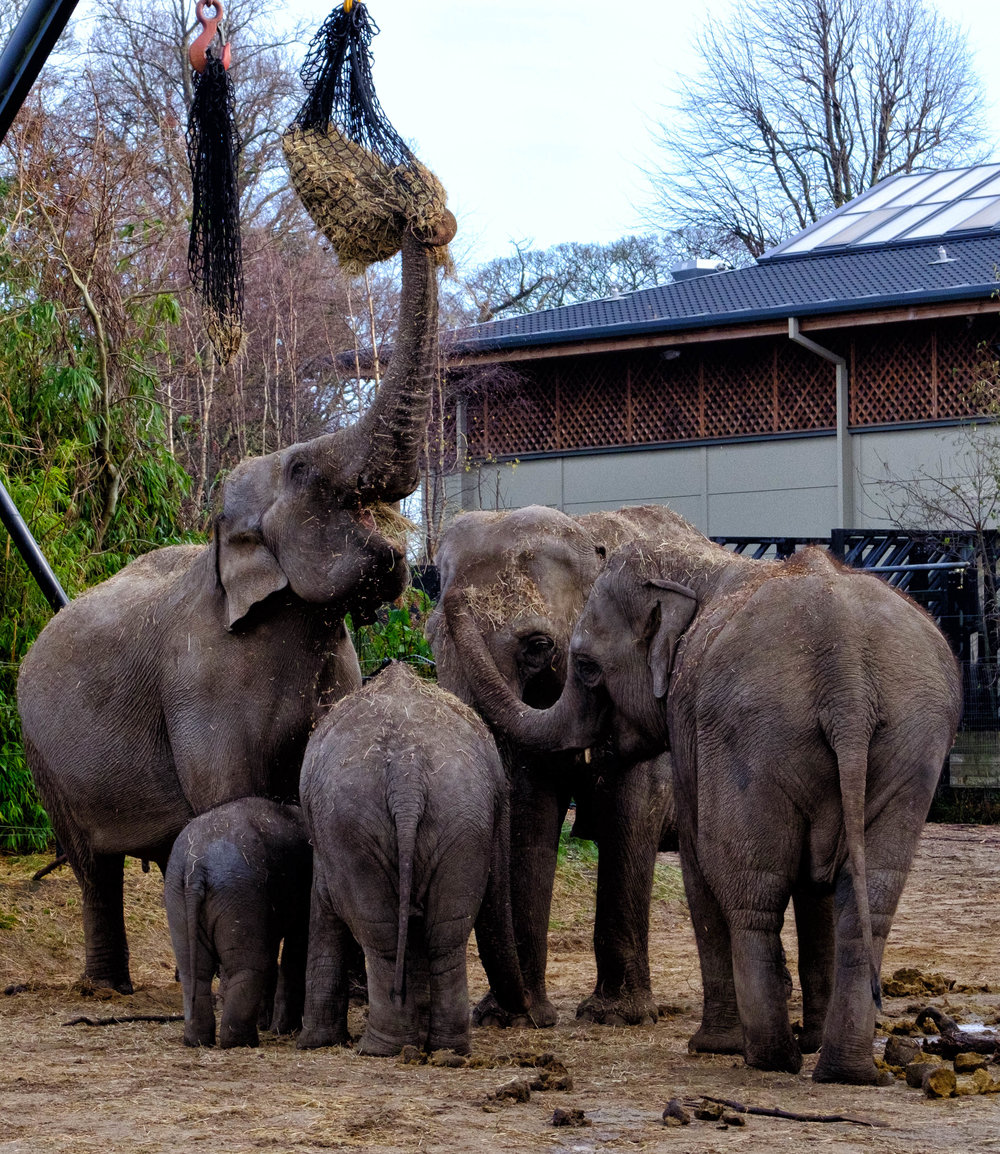
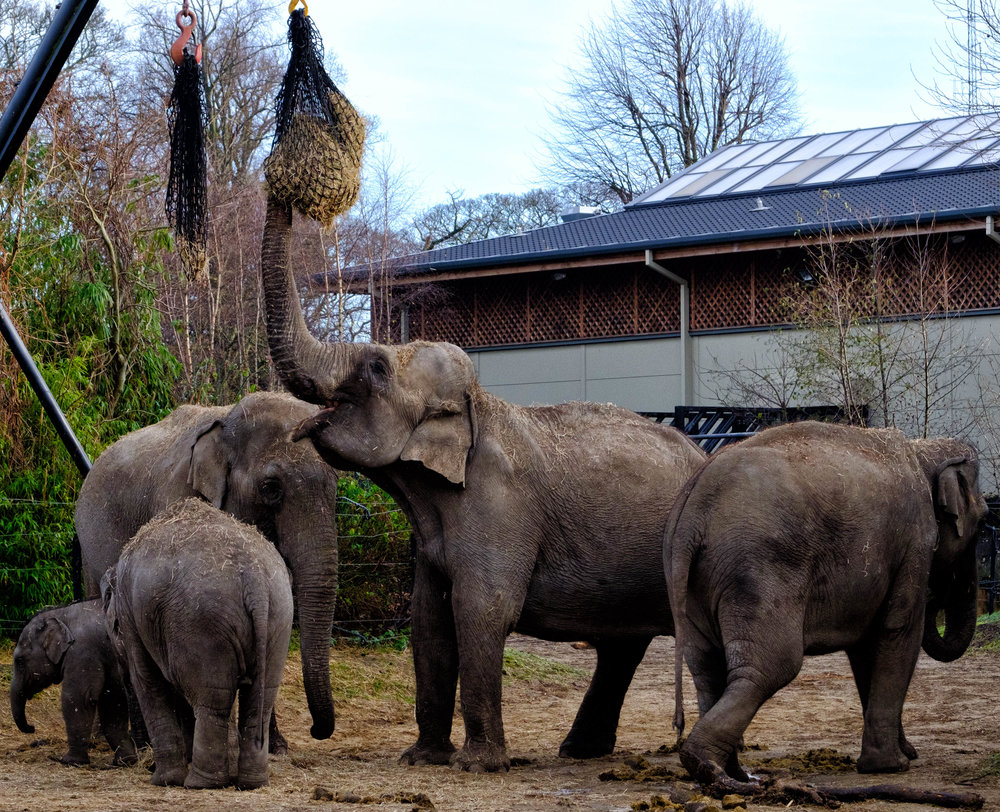
This was like any family dinner table where the person with the longest spoon ( trunk) was most likely to get the biggest share of the food. The two smallest members of the family had to rely on what had fallen on the ground, but the middle sized guy seems to be getting cross about things and seems to be stomping off in the last photo on the right saying ’ What does a chap have to do to get some food around here?’
The reptile house is now in the building that was known as the Lion House when I was a child. It is now called ‘Zoorassic World’ and features a replica Tyrannosaurus Rex skeleton inside to appeal to the young folks. Unlike the old house it is very well lit, but the lighting is not as dramatic as it was in the old house.
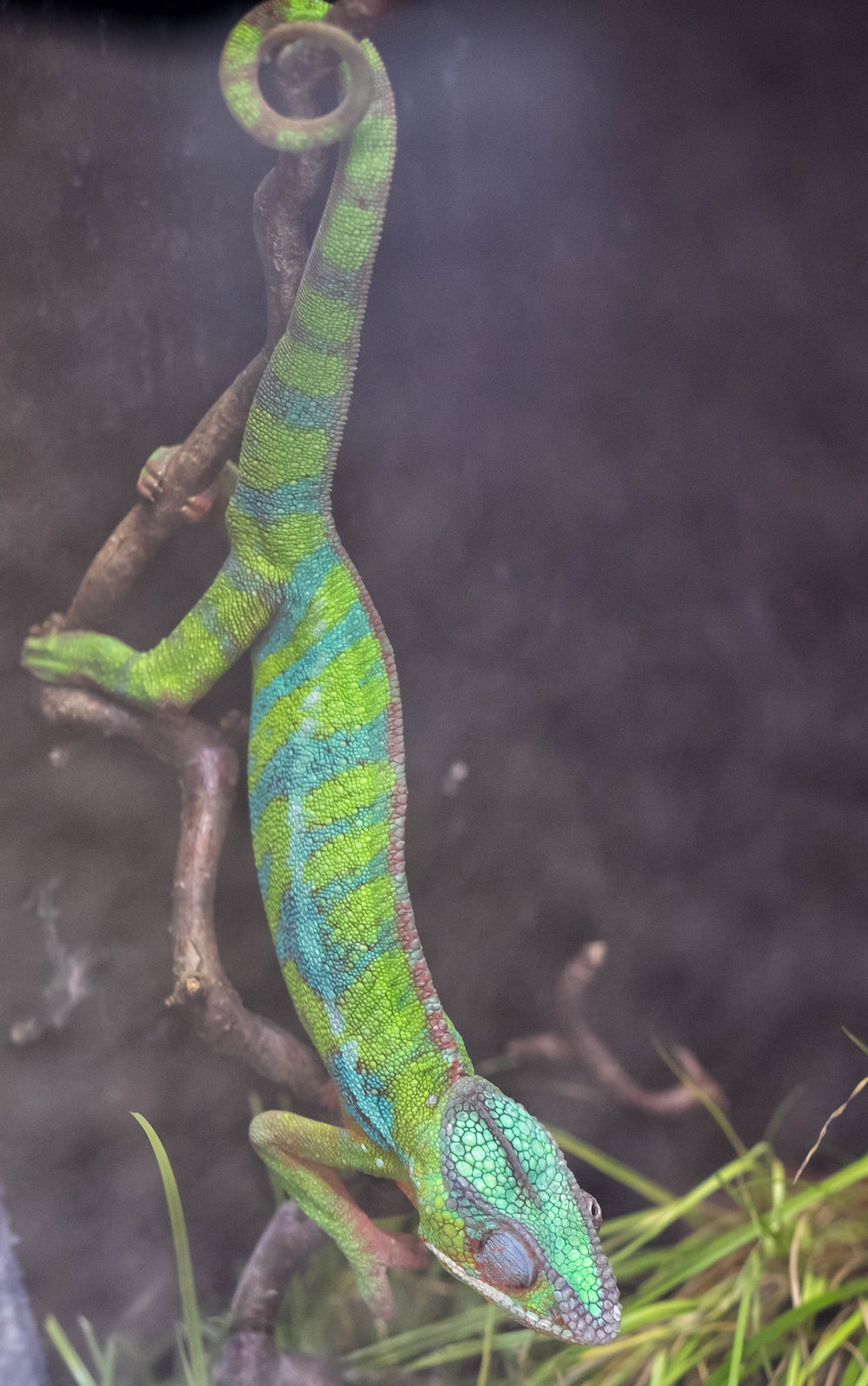
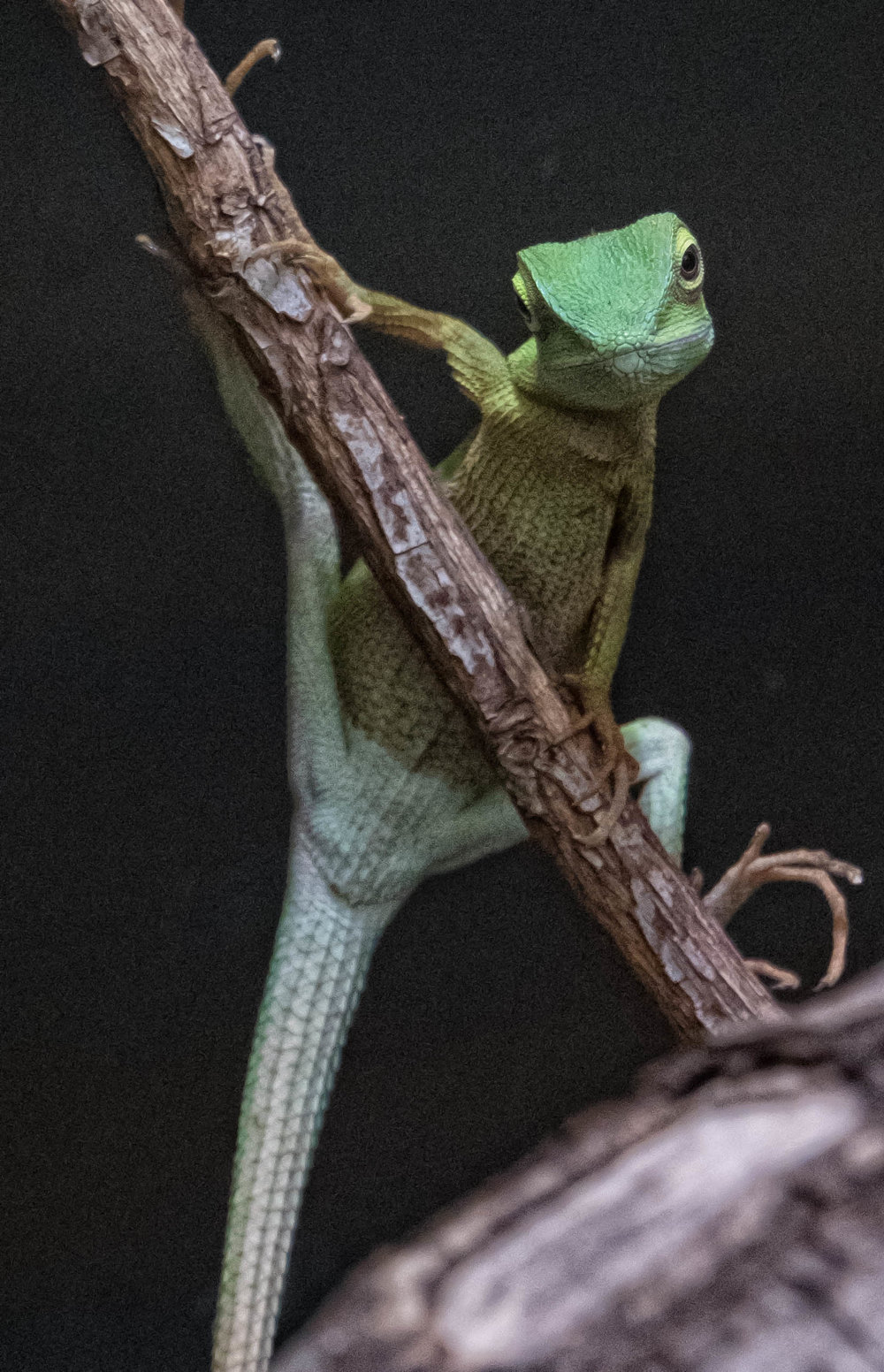
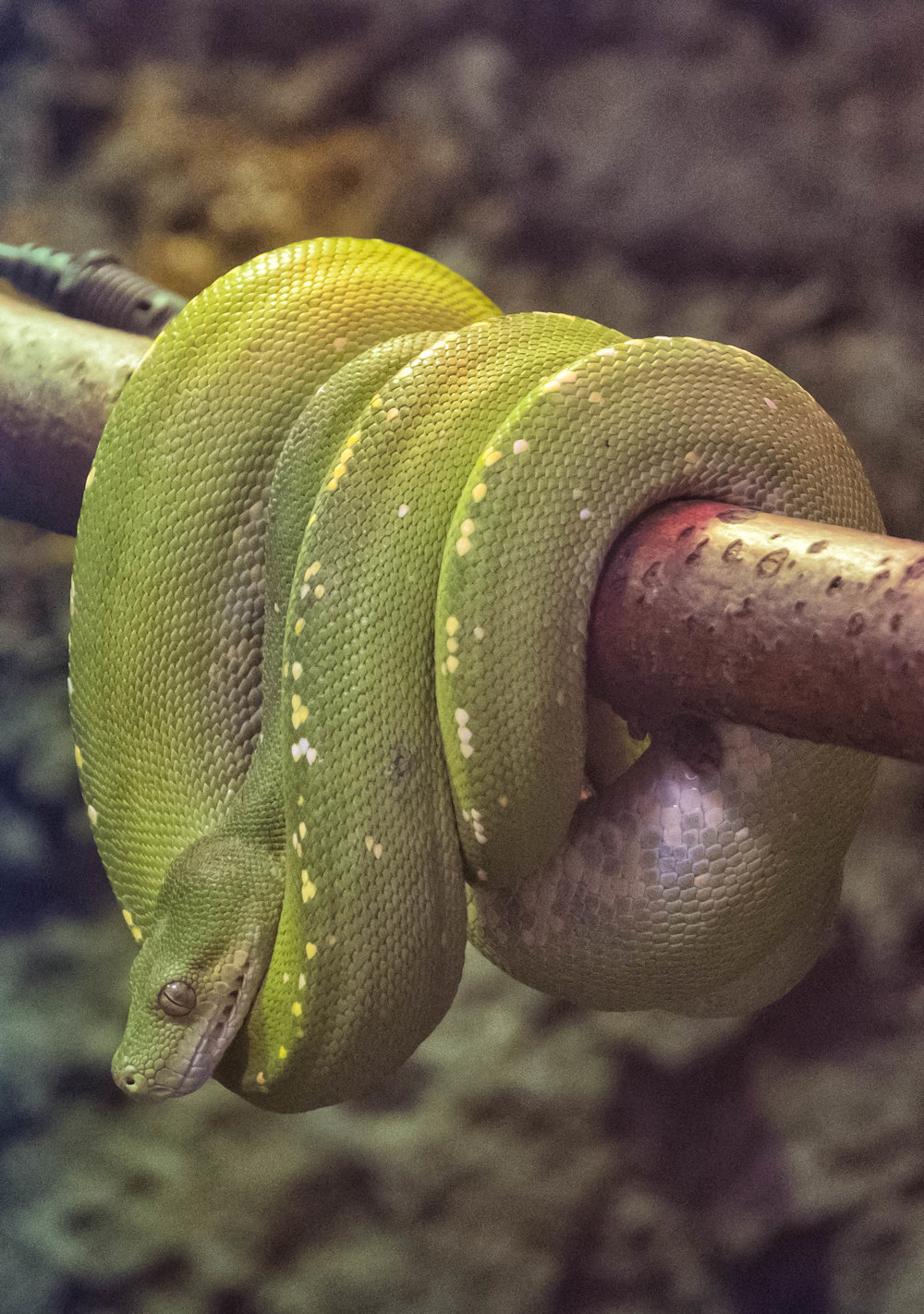
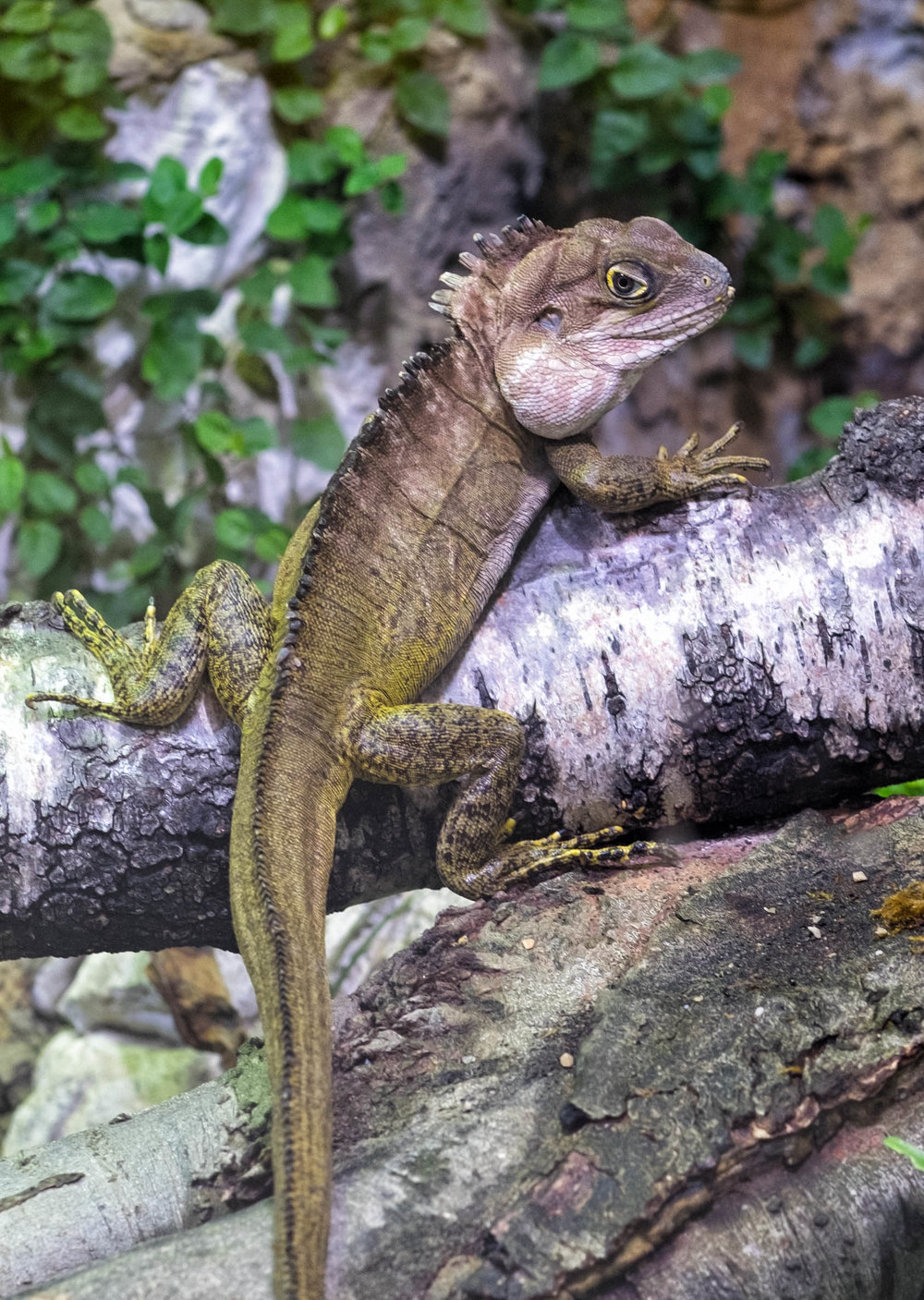
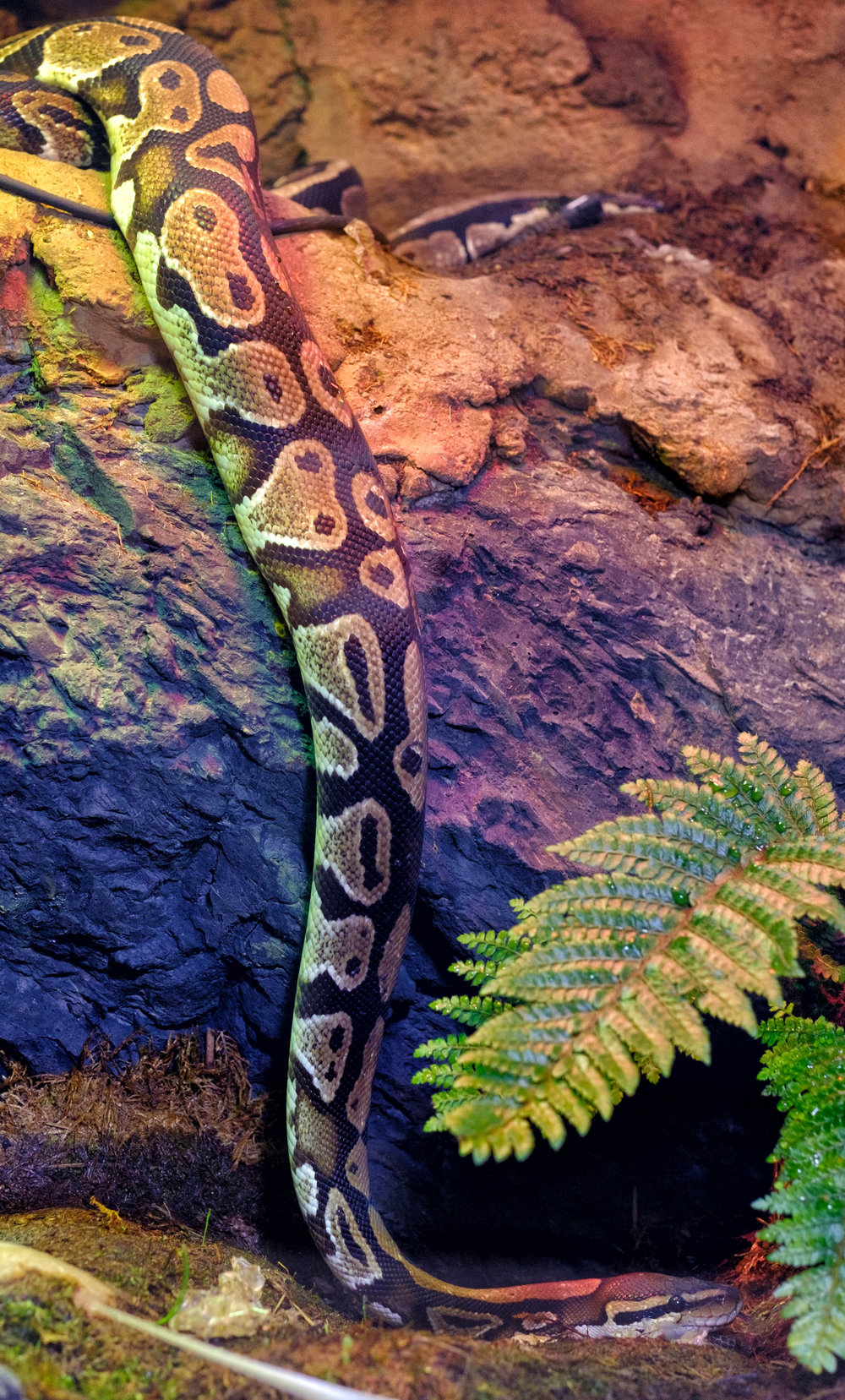
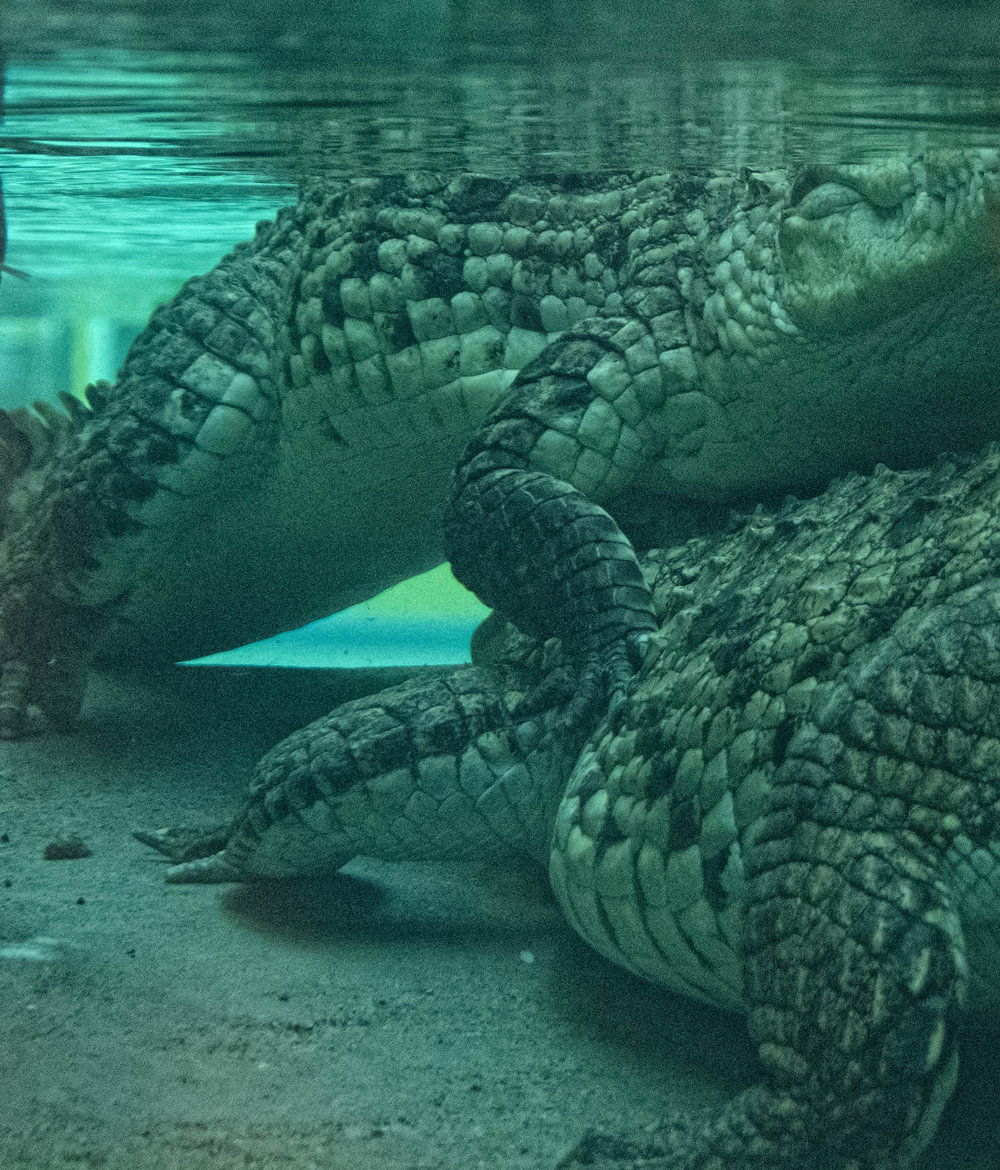
The last photo on the lower right shows two large crocodiles grappling with one another. It was difficult to get as I had to get down on my arthritic knees and shoot through murky water and then crop away some artificial rocks in their pool in order to get the squarish photo above. The nice thing about shooting photos of reptiles is that they generally tend to move rather slowly. A qualified thumbs up, therefore, for the new reptile house.
I then made a quick dash through the South American House, where I captured this photo of a White-Faced Saki
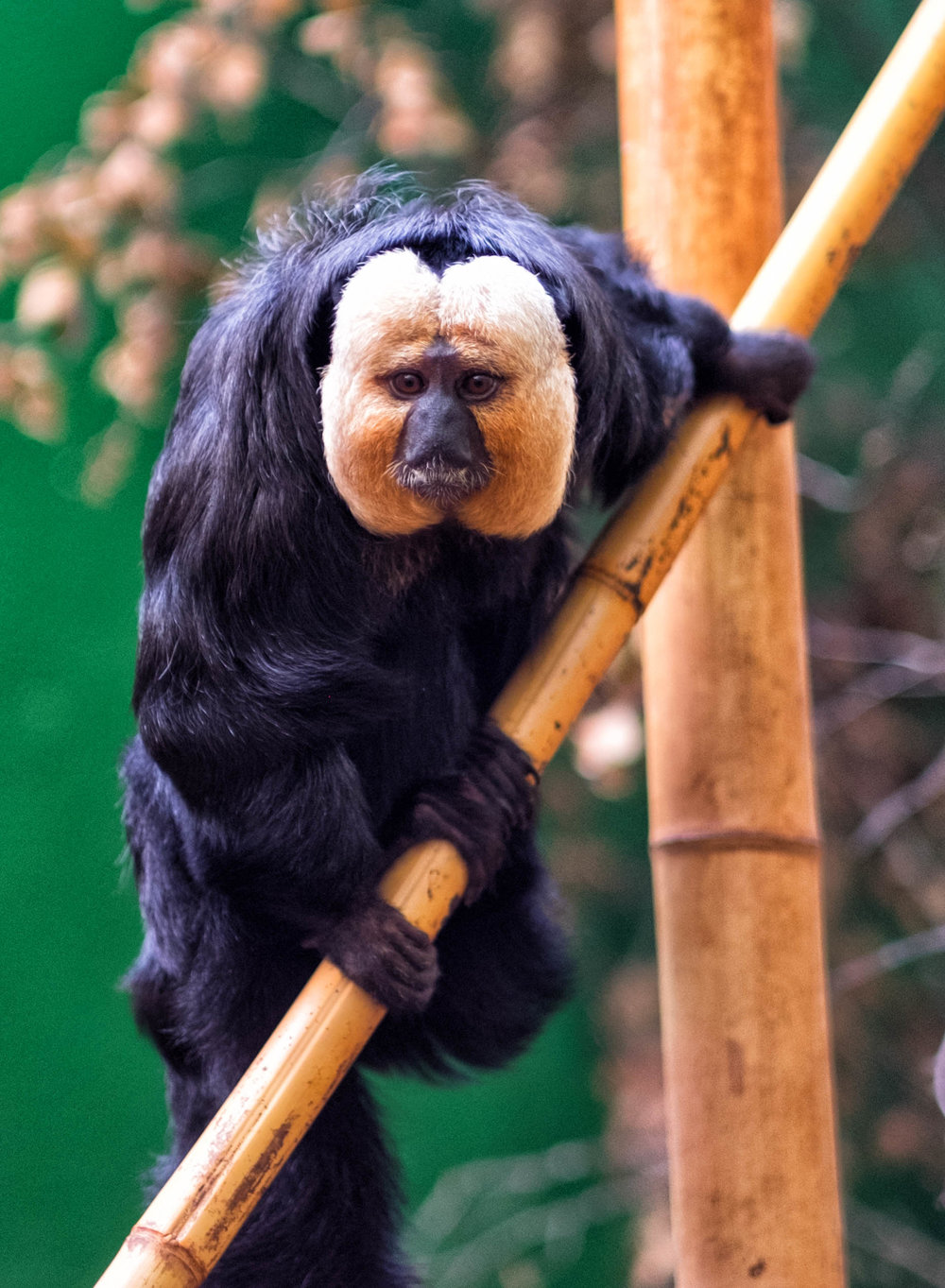
God bless whoever put that nice diagonal bamboo into the Saki enclosure. For those that are interested, this photo was taken with the 56mm lens at f1.2.
I went last of all to the lion enclosure where I found my old friend from last year having a drink, just like our family cat.
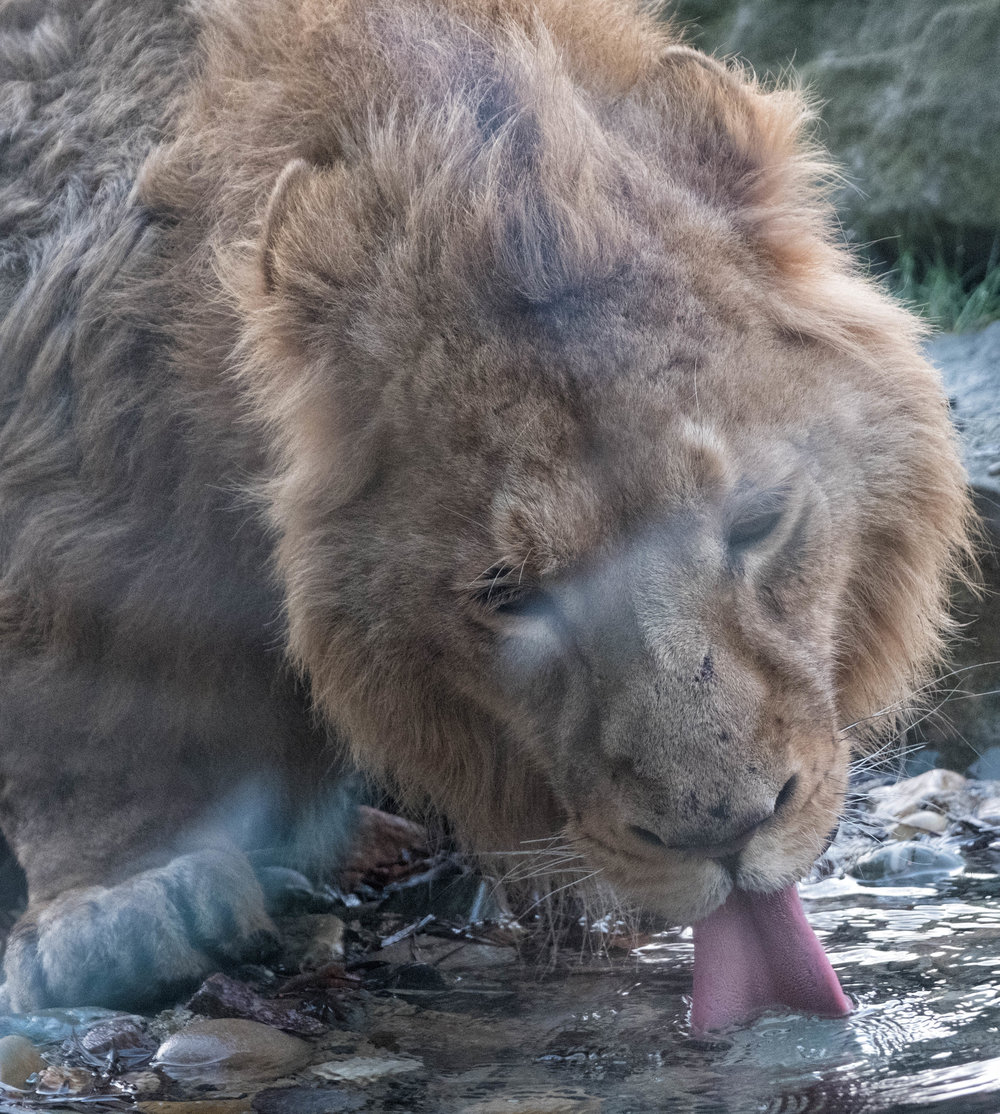
The white mark on his face came from markings and condensation on the plexiglass on the enclosure, for which I was very grateful, as he was only about 5 feet away from me at the time.
Before finishing, here are some landscape type pictures from around the zoo, which is beautifully laid out. The photos on the left and right below show some of the Chinese lanterns/installations still in place. The photo on the left also shows the thatched entrance hut (no longer used) through which I first visited the zoo over 60 years ago.
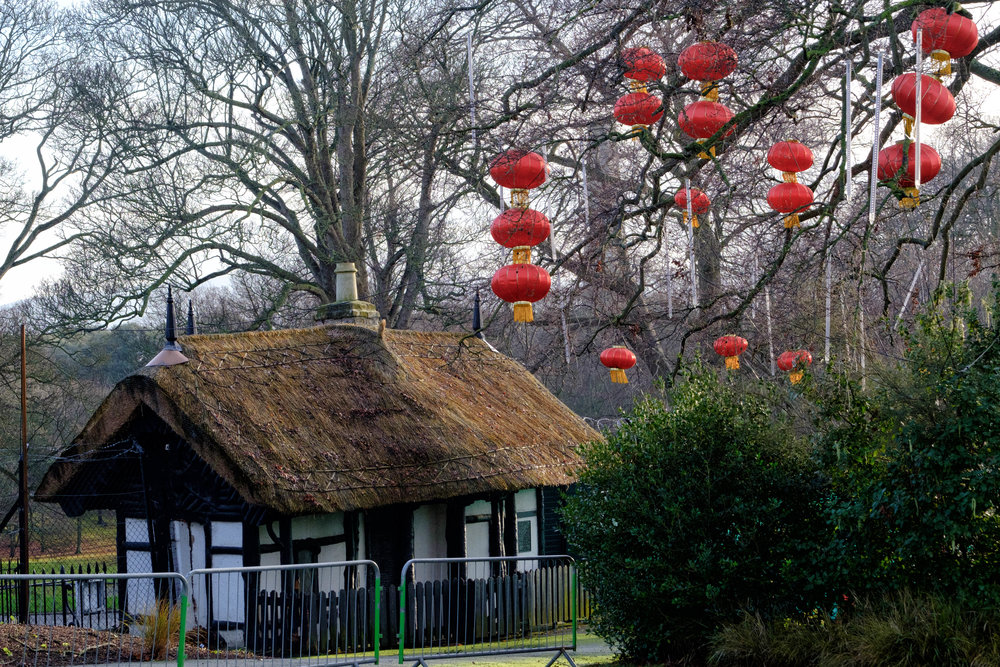
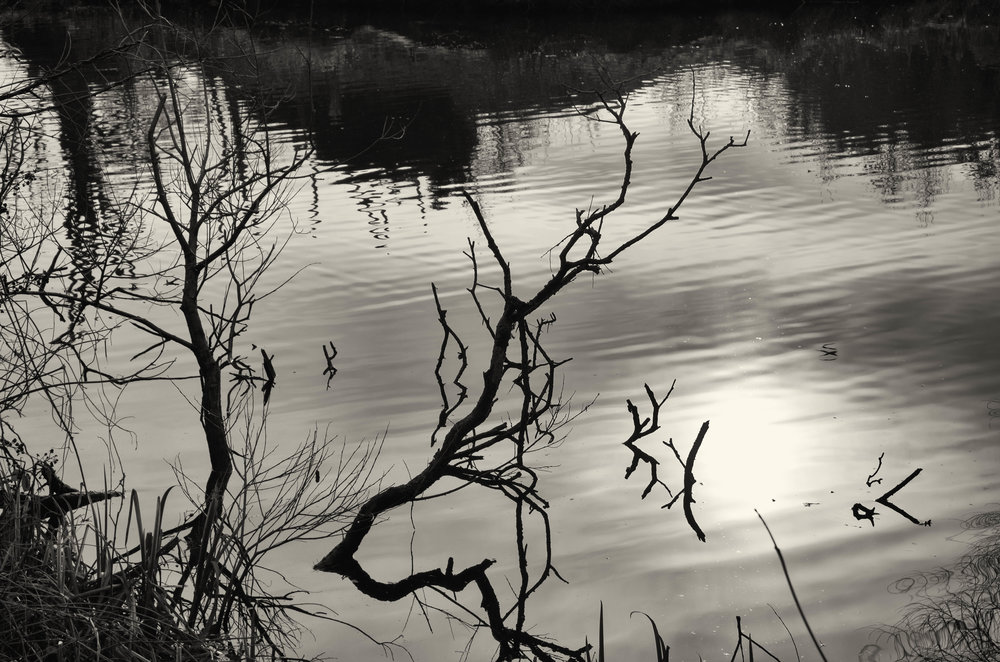
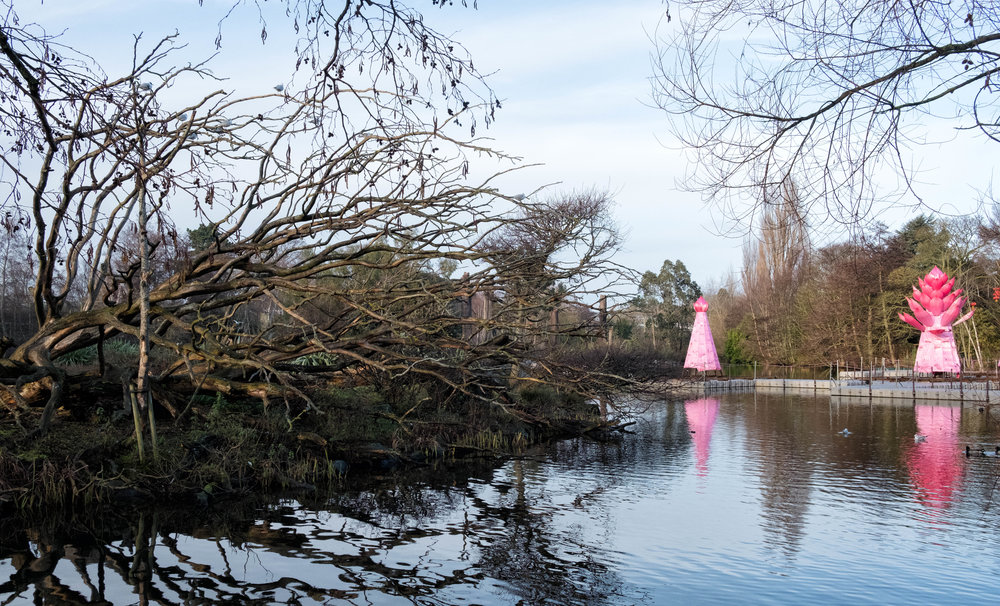
Just some technical points. Both cameras worked very well. The 50-140mm zoom was used without the 1.4 convertor which stayed in my bag. It would have been useful once or twice, but I prefer just to take photos rather than change lenses etc. The zoom is quite a bit better at the long end than at the short end and seemed to improve as the day went on. I don’t use it very often and so, maybe, the practice was helping me. As against that, the weight of the thing caused my arthritis to kick in as the day went on. The 56mm lens was superb, but a bit slow to focus. Photography is all about managing trade-offs, of course.
What about the animals? They just said to say hello to everybody.
________________
- Subscribe to Macfilos for free updates on articles as they are published
- Want to make a comment on this article but having problems?

A nice adventure and series of images William. Thank you for sharing with us, as Kevin says below, I really like the flamingo reflection, and that rather close lion. Plexliglass or not, you maybe a shade brave than I am. Dave
Thanks Dave
I took a multi frame series of photos of the Lion drinking and played quickly he looks just like our family cat drinking a saucer of milk, except that this fellow could fit our cat inside his mouth. The plexiglass is strong, but had a lot of condensation on it from the cold day. It was one of those situations where I needed to decide do I take an imperfect image or give up the opportunity to capture a lion drinking a matter of feet way? I chose the former. I believe in real world photography, where the image you have is always better than the image you did not take.
William
The flamingo and its reflection is my favourite!
Thanks,
Kevin
Thanks Kevin. The photos is a crop and could be better, but I had to be quick, as within a matter of seconds the flamingo had moved and the reflection had gone.
William Fagan
A fine picture regardless. Thirty five years of taking pictures and multiple visits to our zoo and I have only one decent picture of a flamingo and only then because it was asleep!
Thanks Richard
I have had many failures with flamingos. They can be quite busy and move around a lot. This one could have been better, but I took a shot as soon as I saw the reflection. Within seconds the bird had moved to the side where there was no reflection. Last year the flamingos were in quarantine because of a bird flu threat.
At least I had a clear shot of the flamingos. A lot of the other animals had bars, fences, windows, rocks, plants and water in the way. They have a giant Amur (Siberian) Tiger in the zoo, who is quite magnificent, but the windows of its enclosure were fogged up all day. What I have shown here were the best shots I could get on the day of my visit.
William
Beautiful a n d hilarious! I like the idea that it is we who are being watched. Some of the images are on the verge of marvellously coloured abstracts – and if they were on my computer I woudn’t be able to resist doing some copies and applying some vigorous cropping, just for the fun of it. I also liked your words about trade-offs – it’s odd us aking our cameras to do what they won’t do, but most are pretty amazing nowadays.
Thanks John. I had done a tour around Dublin Zoo last year and came up with a different set of animals. I thought I would vary it with a bit of humour, particularly after my daughter’s comment. The Chameleon is a watcher par excellence and is capable of 360 degree vision and is also capable of transitioning between monocular and binocular vision. I doubt if there is a lens designer in Japan or Wetzlar capable of replicating such a unique optical device.
Try copying and pasting this link https://asknature.org/strategy/eyes-give-360-vision/#.Wl_SOCOcYy8
William
William,
Happy New Year!
As a keen zoo visitor, I am very appreciative of your superb images and the trouble you have taken to obtain and present them.
There is lovely detail in many of the images, the chameleon, lemur and saki to name but three and the elephant group ones are excellent too but I like them all even the ones through plexiglass. I have some Tiger ones which are similarly taken since the main viewing point at Chester is shielded in this way. I suppose its better than becoming a prey species!
The 56mm is a cracking lens but as you imply better at focussing on sloths than faster moving animals. I have just acquired the 50-140 so look forward to testing it out.
Thanks again so much for your updated tour of Dublin zoo which has considerably brightened a dark Winter’s afternoon here.
David
Thanks David. I must call into Chester Zoo, the next time I am in your part of the world. The 56 f1.2 is indeed wonderful for indoor work, but slow to focus. The new lighting in the Zoorassic Reptile House in Dublin will allow the 50-140 f2.8 to be used indoors. It is faster focussing than the 56mm, but compares unfavourably from an optical perspective at the short end. It is, however, excellent at the long end and the 1.4 extender does not take away too much quality. The image quality in my photos varies somewhat, due to ‘environmental’ conditions and not the equipment or, hopefully, the photographer.
William
David
I was wondering why I could not see the Macaques this time around, but some news appeared in our newspapers yesterday. They were, in fact, on the ‘naughty step’ in their enclosure following this incident some months ago https://www.independent.ie/irish-news/storms/how-three-monkeys-staged-a-daring-escape-at-dublin-zoo-during-storm-ophelia-36499875.html
William
Thanks John. We had snow last night, but it has disappeared today apart from on the tops of the mountains near my home. I chose a bright clear day to visit the zoo, but I had to tackle all kinds of lighting indoors and outdoors and obstacles such as glass, wire fences and some murky water for the Sea Lions and the Crocodiles.
William
Looks like you really enjoy yourself at the zoo as much as we followers enjoy your travels and superb photos ! What no snow you lucky Dubliner? Thank you